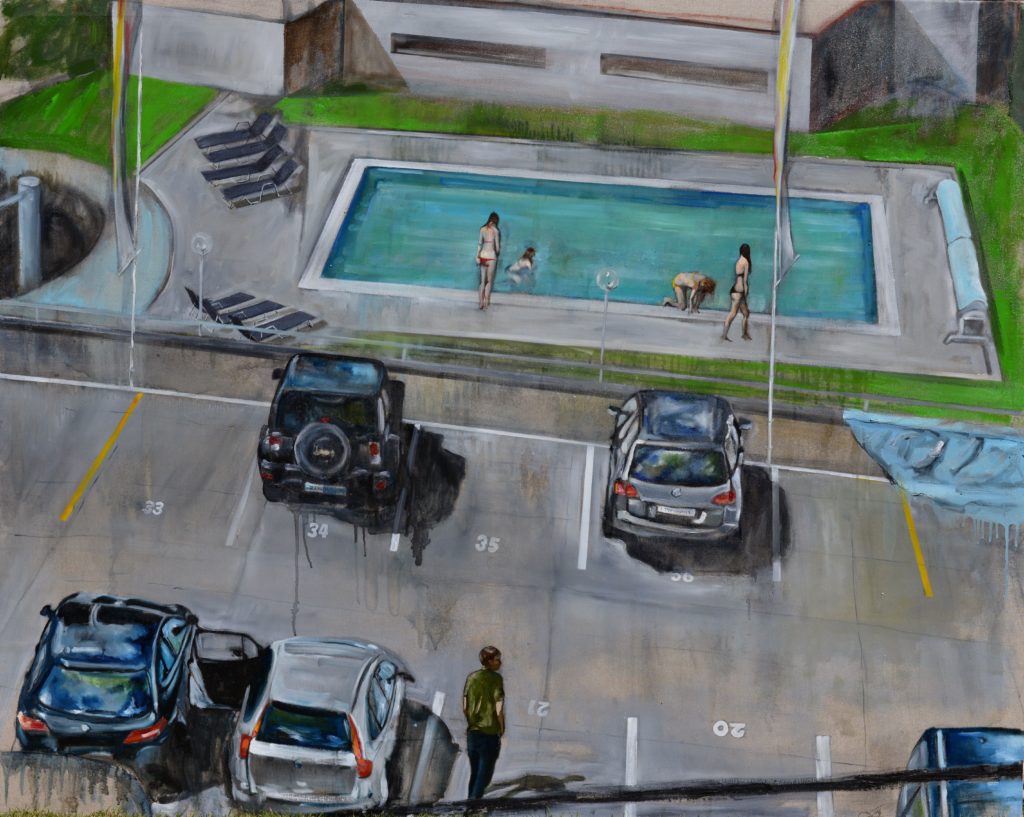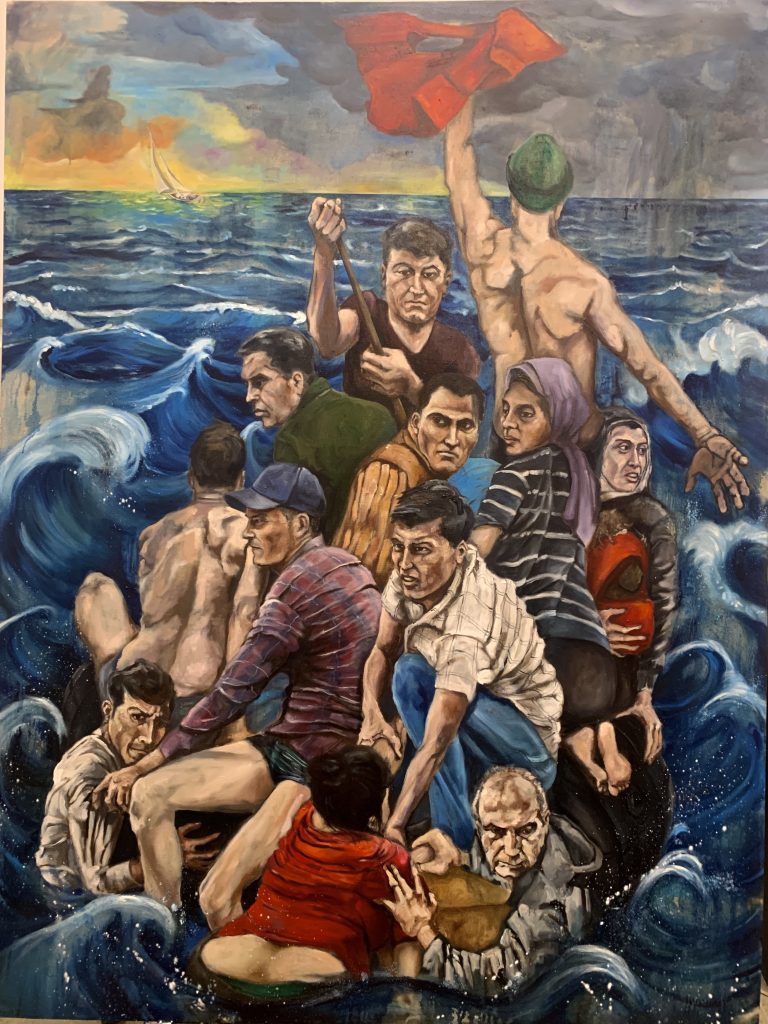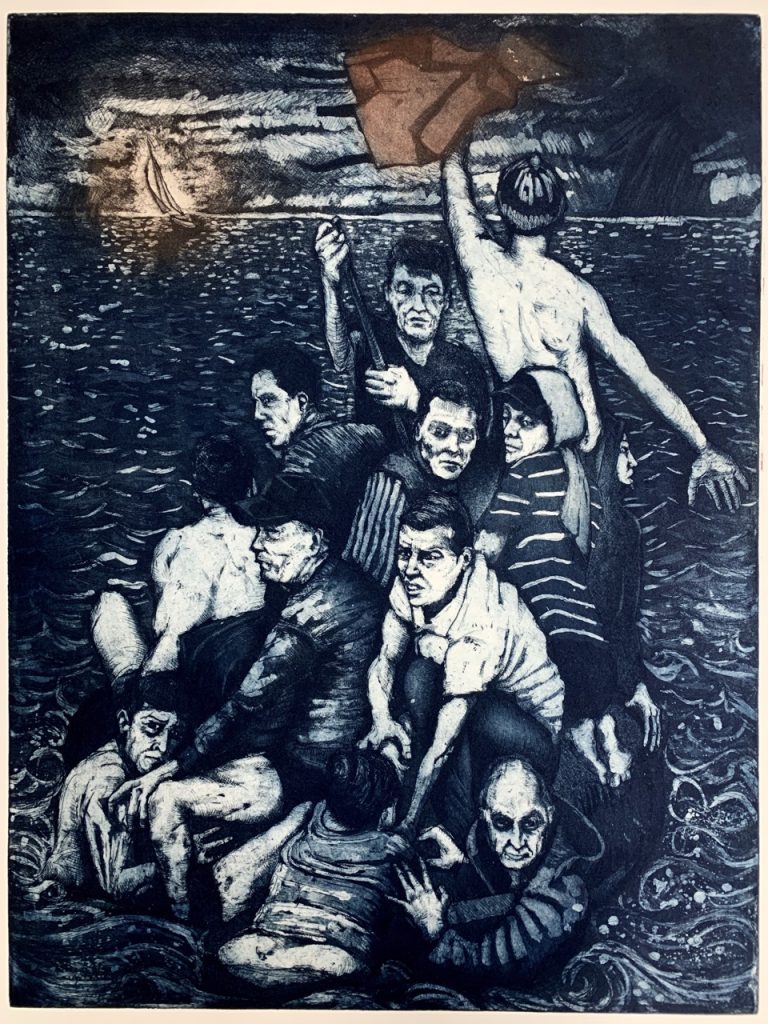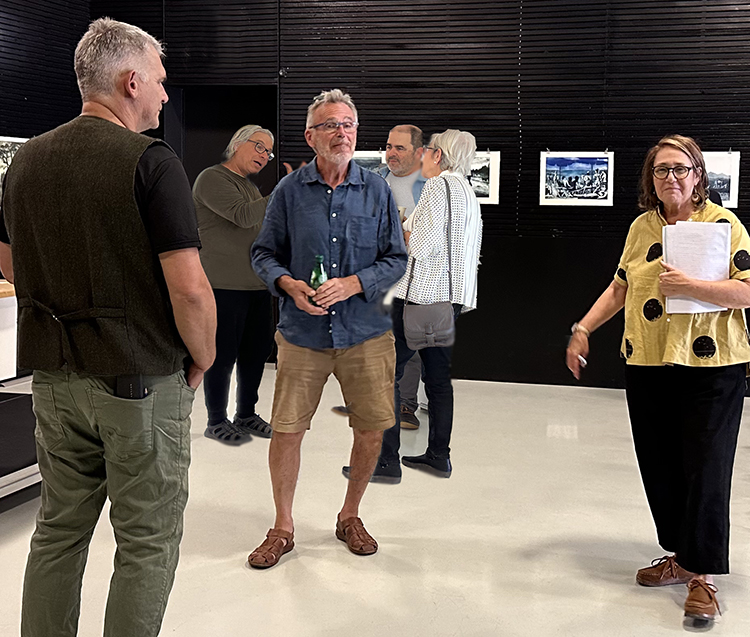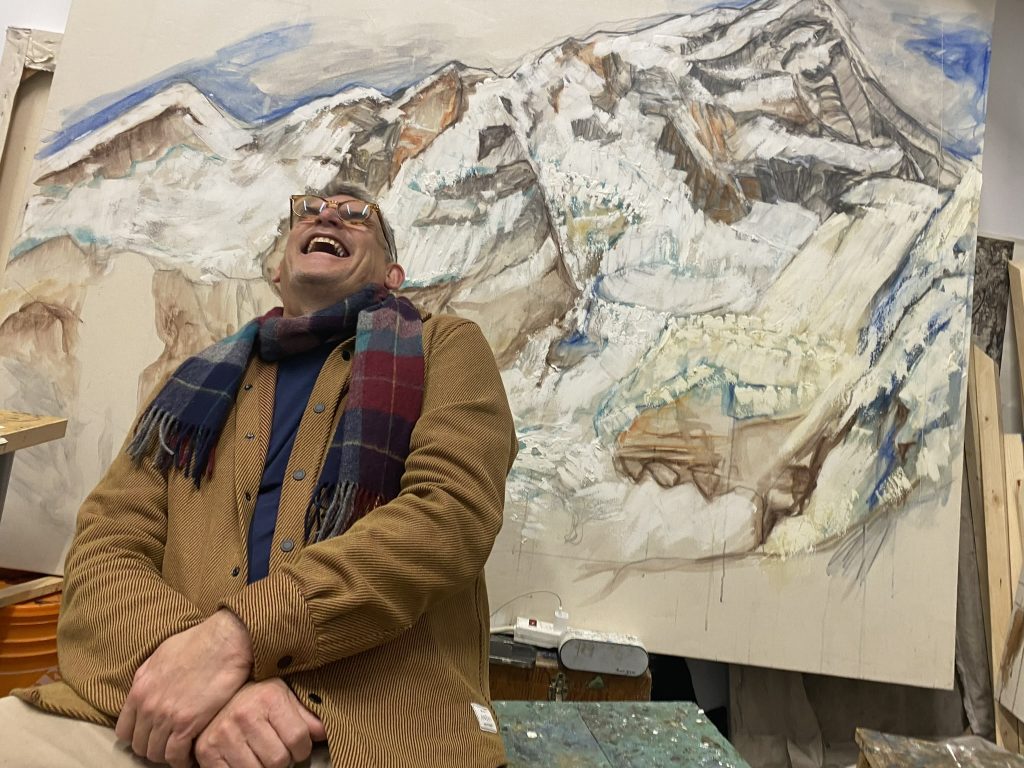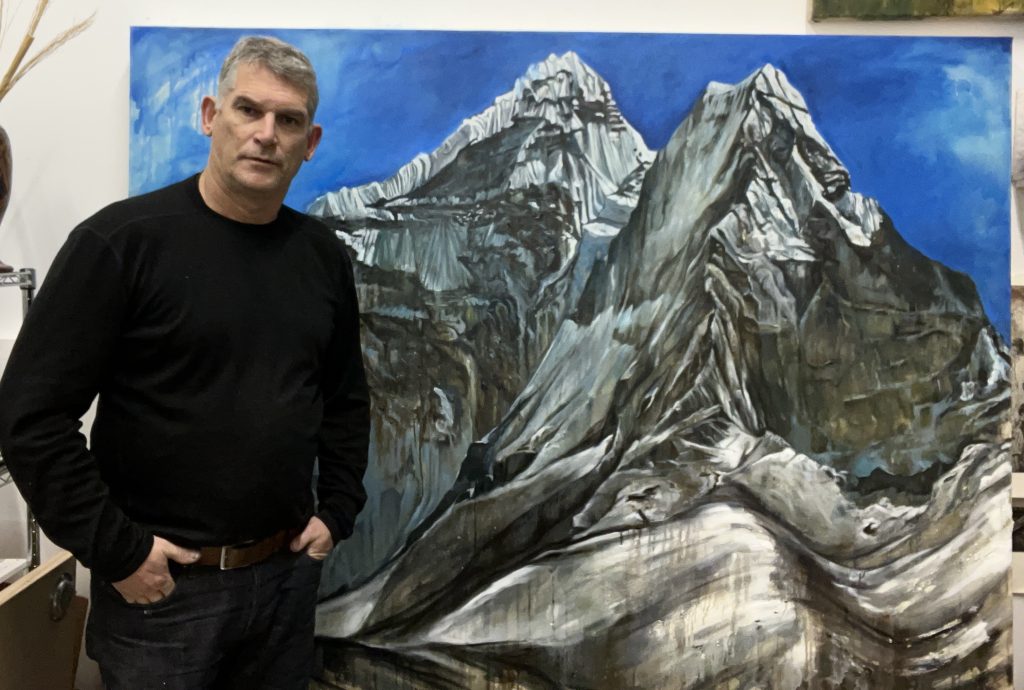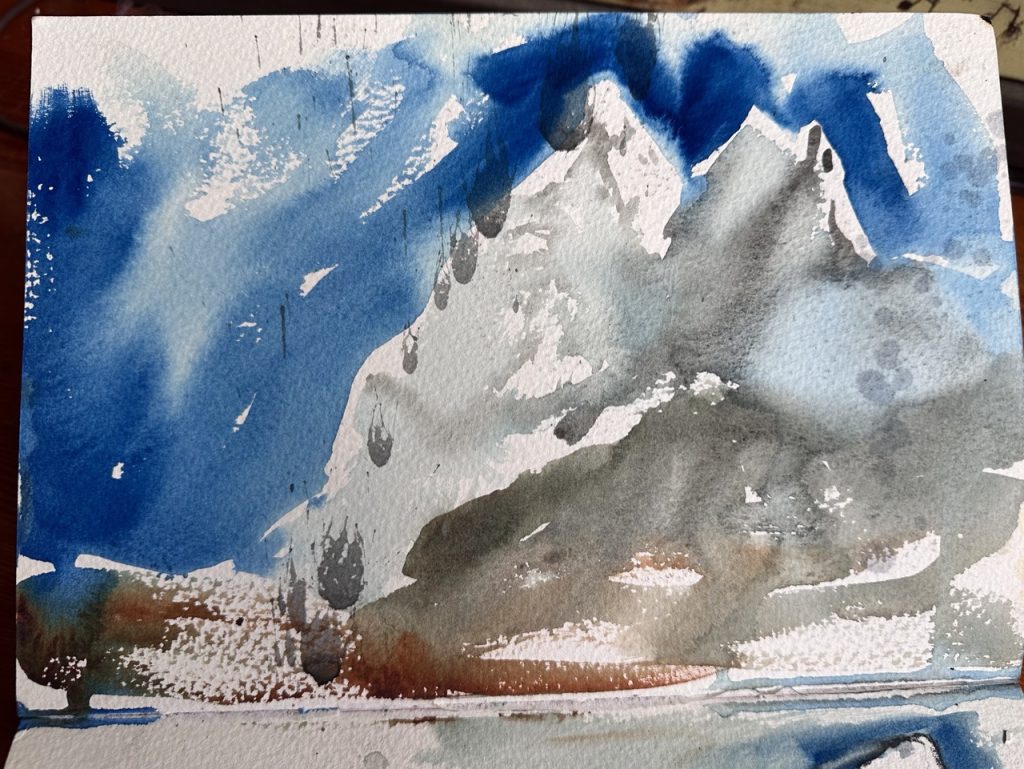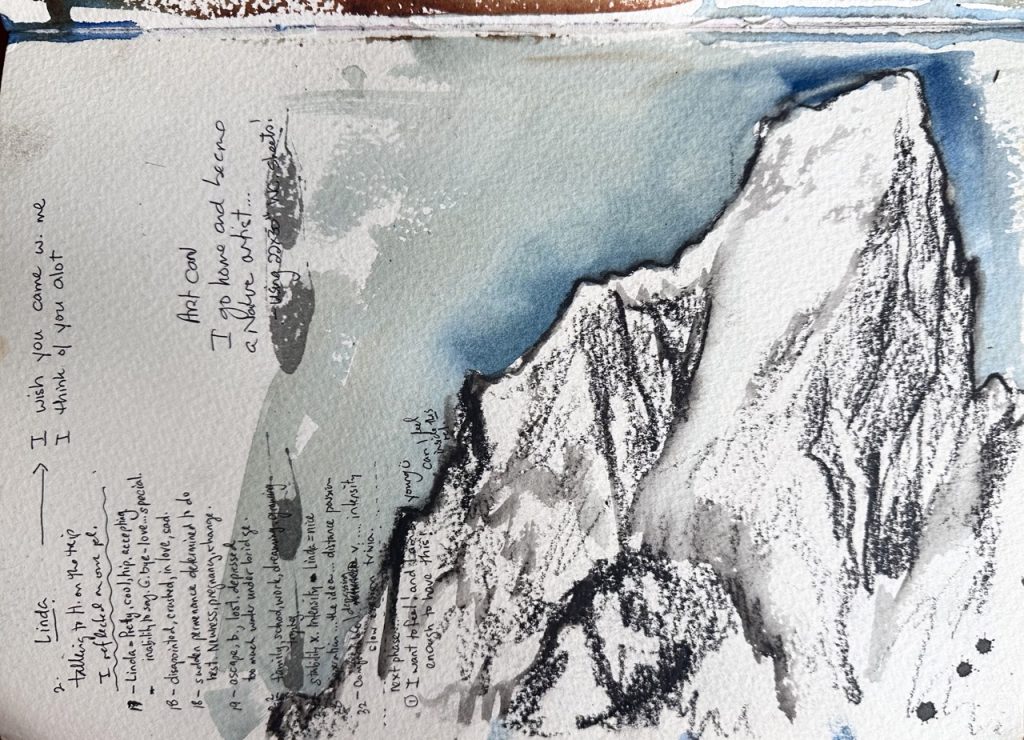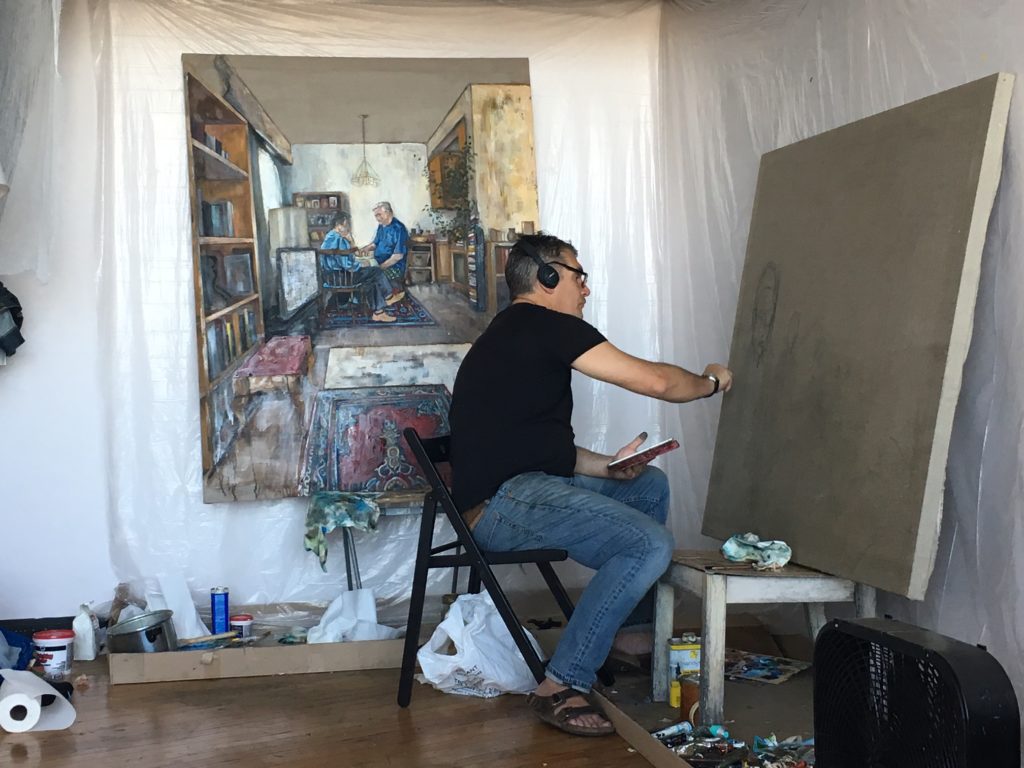
Category Archives: Uncategorized
Water’s edge
“Na Margem da Agua” “At the Waters Edge”
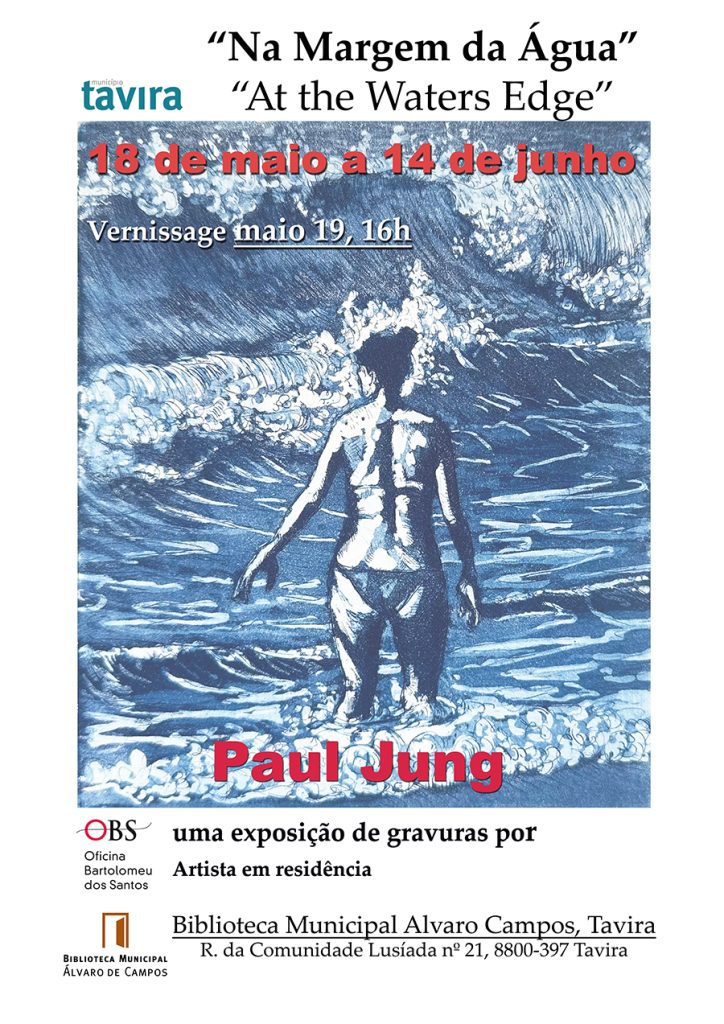
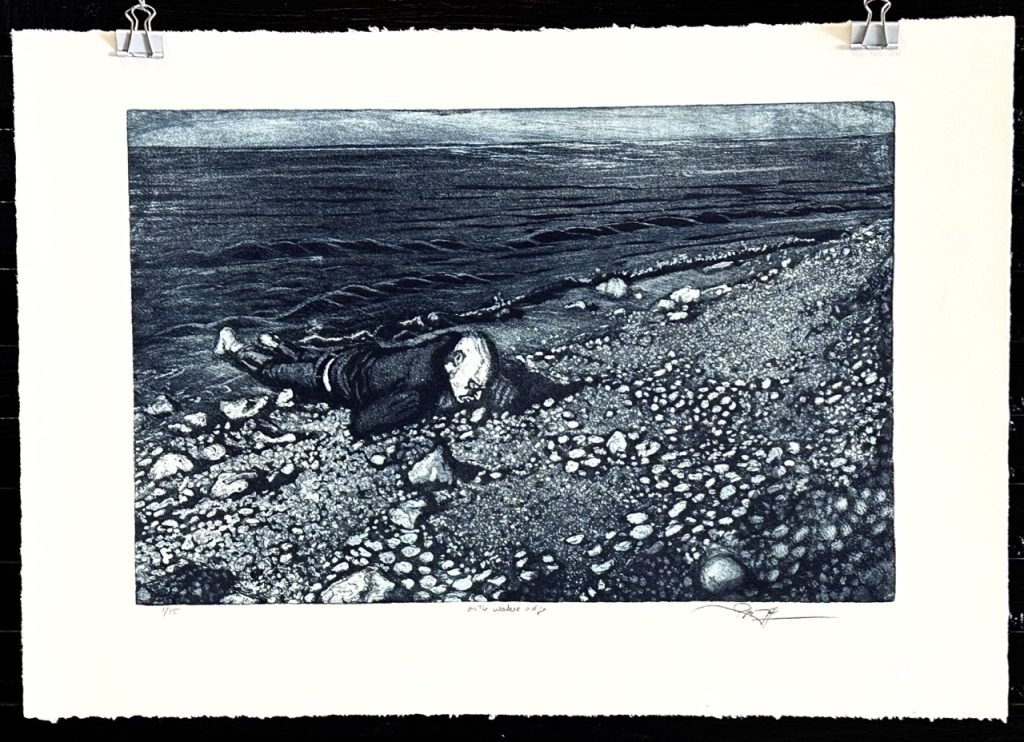
The waters edge
The imaginary of the “water’s edge” is a boundary between the real and the mythical, where freedom, exploration, and renewal can be found. The border between land and water has many associations. It is the intersection between the conscious and the unconscious, it exists as a symbolic transition, it is the point of departure, and the place of return and the location where origin stories begin. The theme orbits around darker associations as we (both individually and collectively) fall off and are “pushed over the edge”.
Multiple discourses operate simultaneously in these works between public exhibitionism and privacy, narcissism and celebration, democratization and privilege, sublime and the absurd. The beach is at the center of the democratization of leisure, but also a place for meditation and self-discovery. The images are landscapes that denote beauty but nature exists here as a backdrop to figures, often tourists, who colonize beauty.
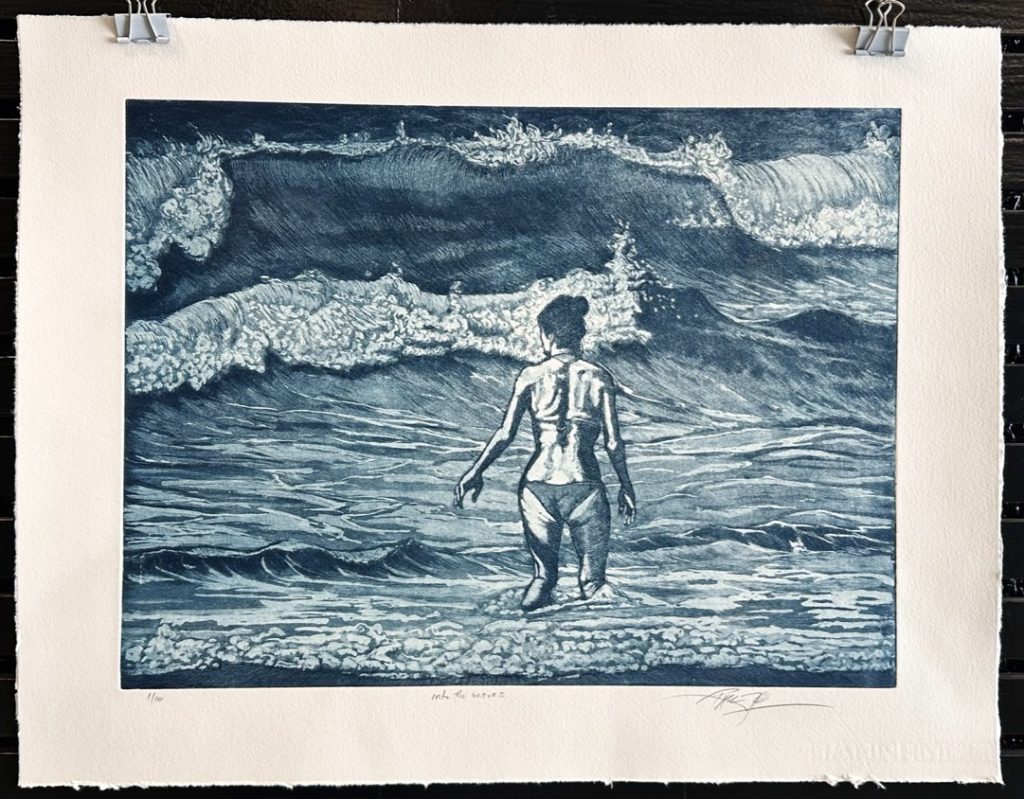
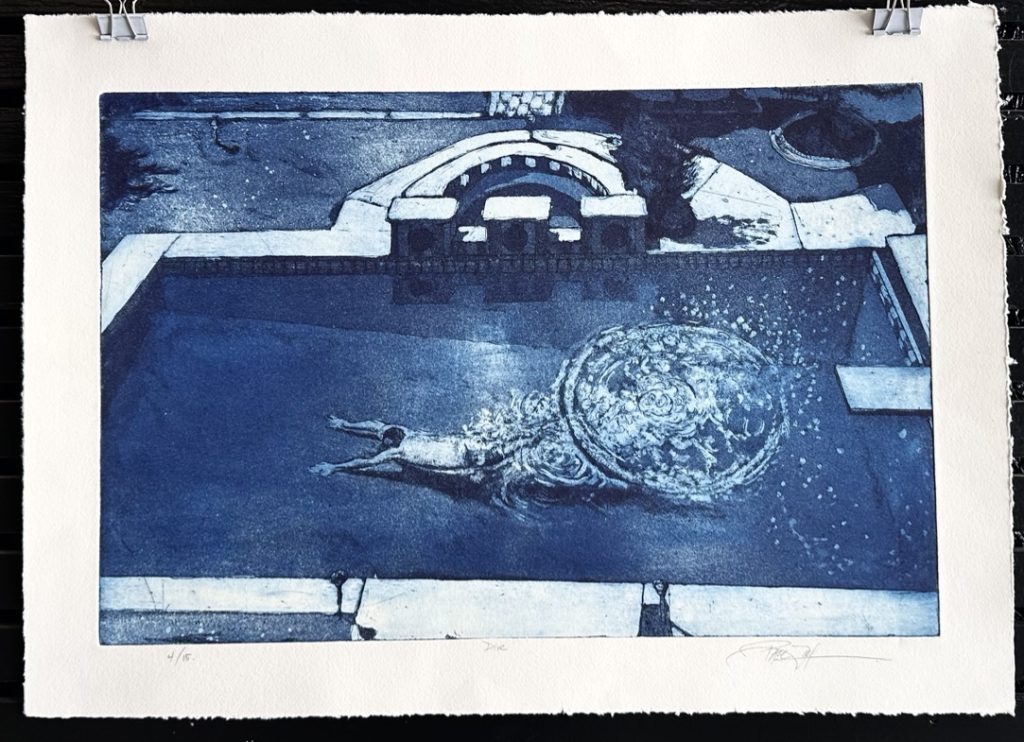
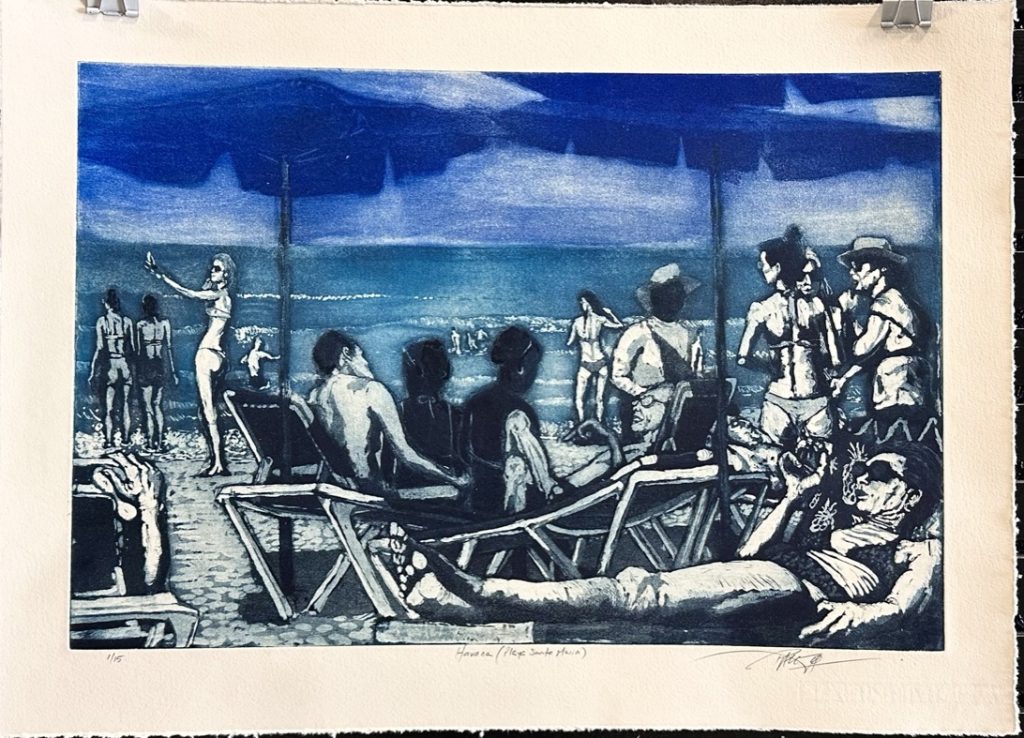
The images have been collaged from photographs deploying narrative forms like metaphor and analogy to excavate mundane moments for additional meaning. Narrative art constructs stories and story telling the philosopher Walter Benjamin said: “takes the representation of human life to its extremes and gives evidence of the profound complexity of living”.
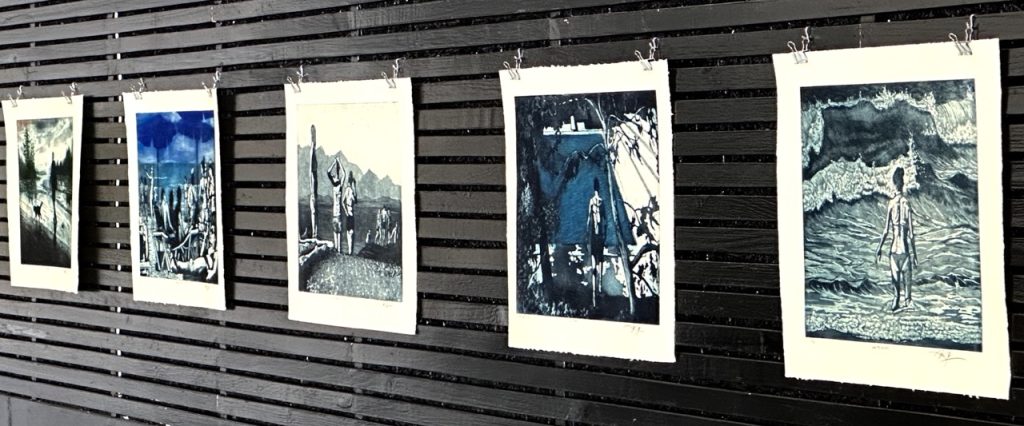
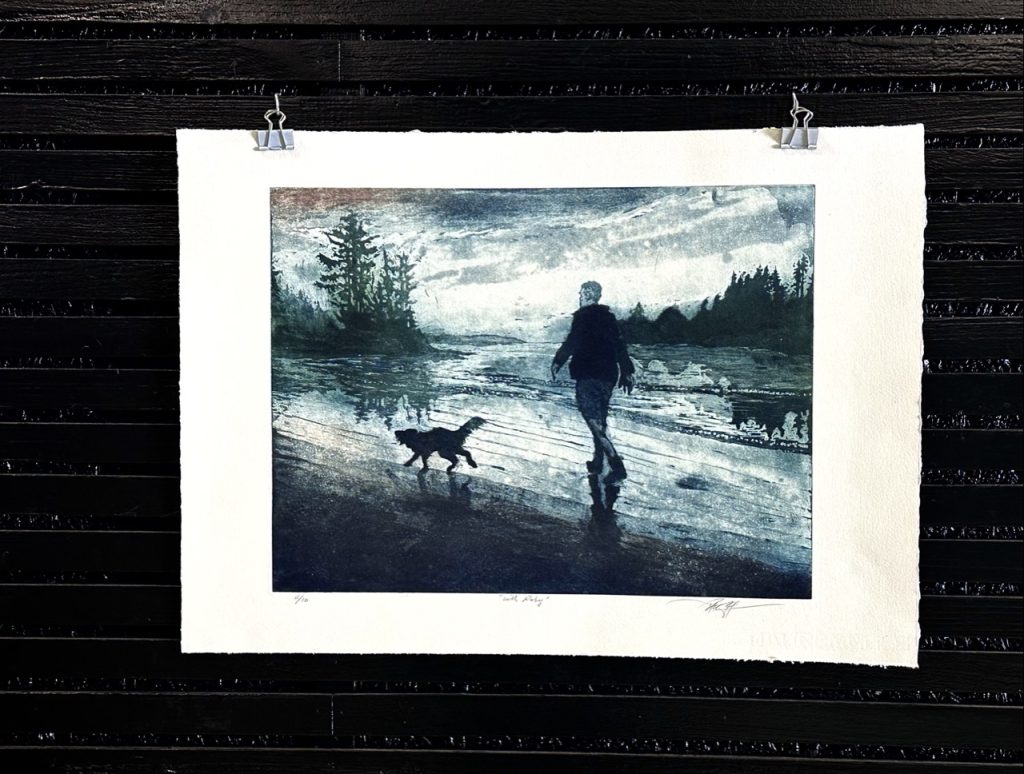
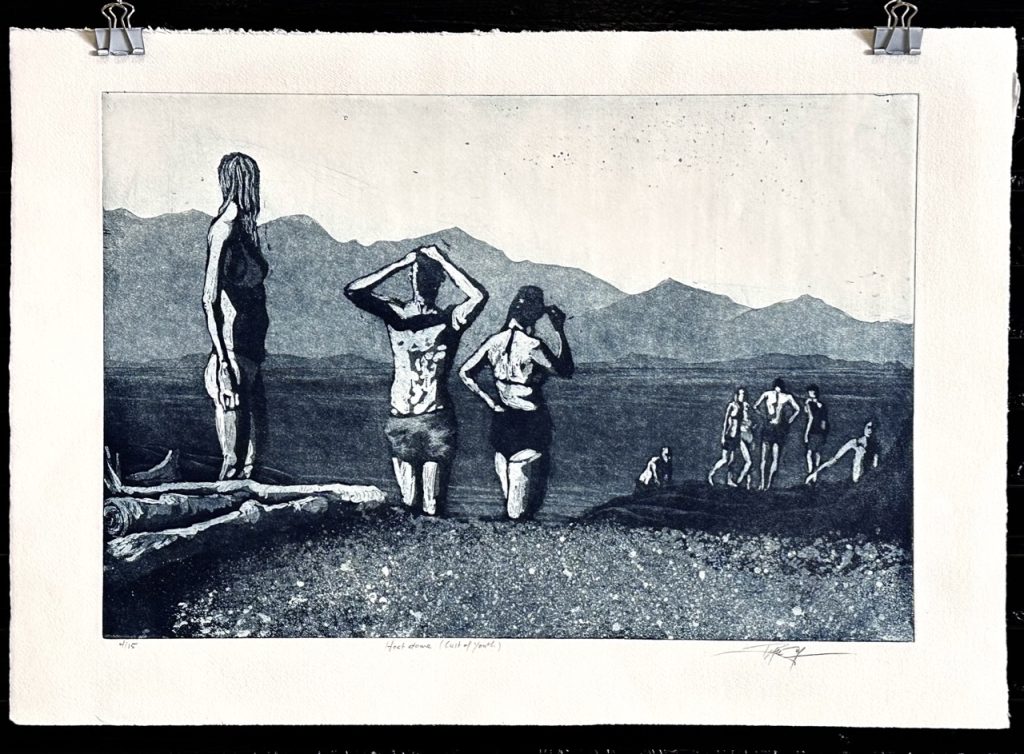
Shown here in Tavira the images construct a frame that invites introspective, however the pictures also place the audience as a voyeur watching others in their public performance of pleasure. Portugal is a natural place to explore the theme since the nations history and identity is welded to its location at the edge of the Atlantic.
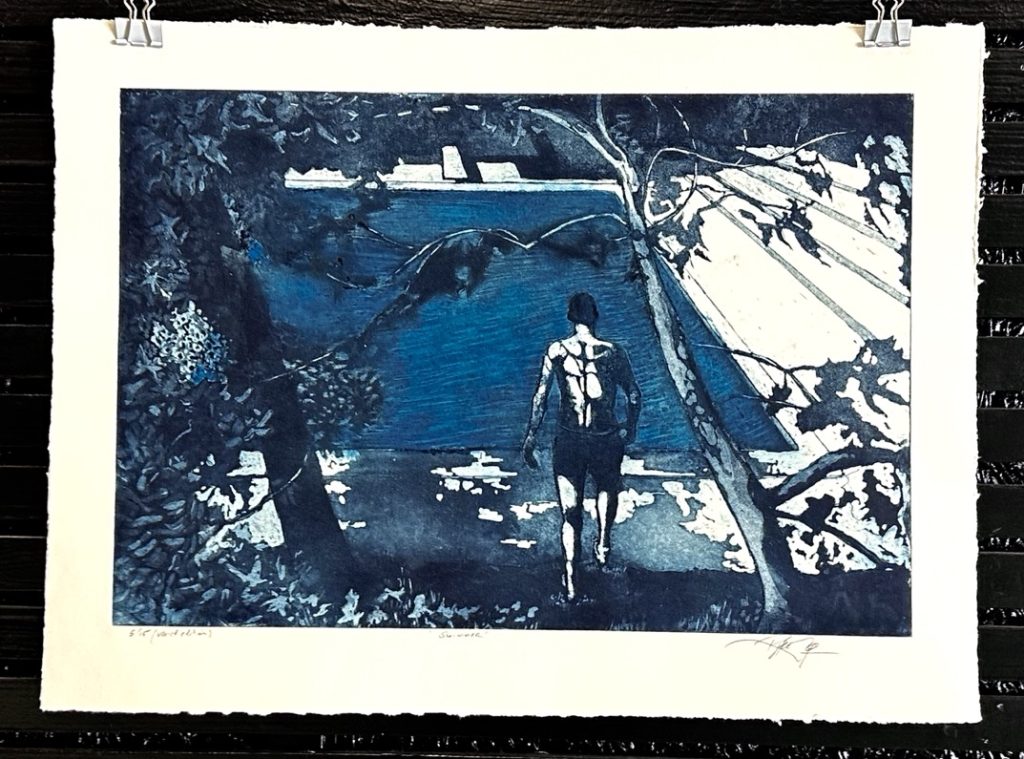
The exhibition is a result of a residency at the Ofinia Bartolemeu dos Santos (OBS). a printmaking studio built by “Barto” dos Santos who was a teacher at the Slade School of Fine Arts in London and was recognized as Portugal’s foremost etcher until his death in 2008. Paul was a student of Barto’s and the exhibition acknowledges the generational debt he owes his mentor. Barto’s art was deeply concerned with ocean imagery and he utilized rich aquatints that gave his prints a spontaneity and painterly fluidity. These prints acknowledging how mentorship is a generative process and part of a generational chain of contemporary art making.
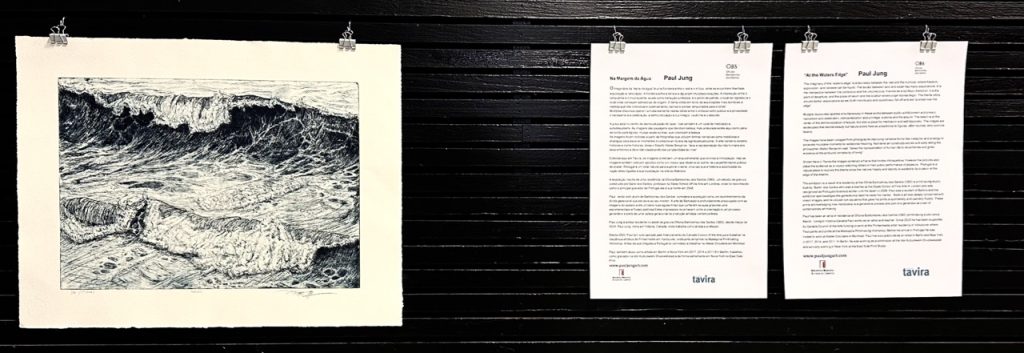
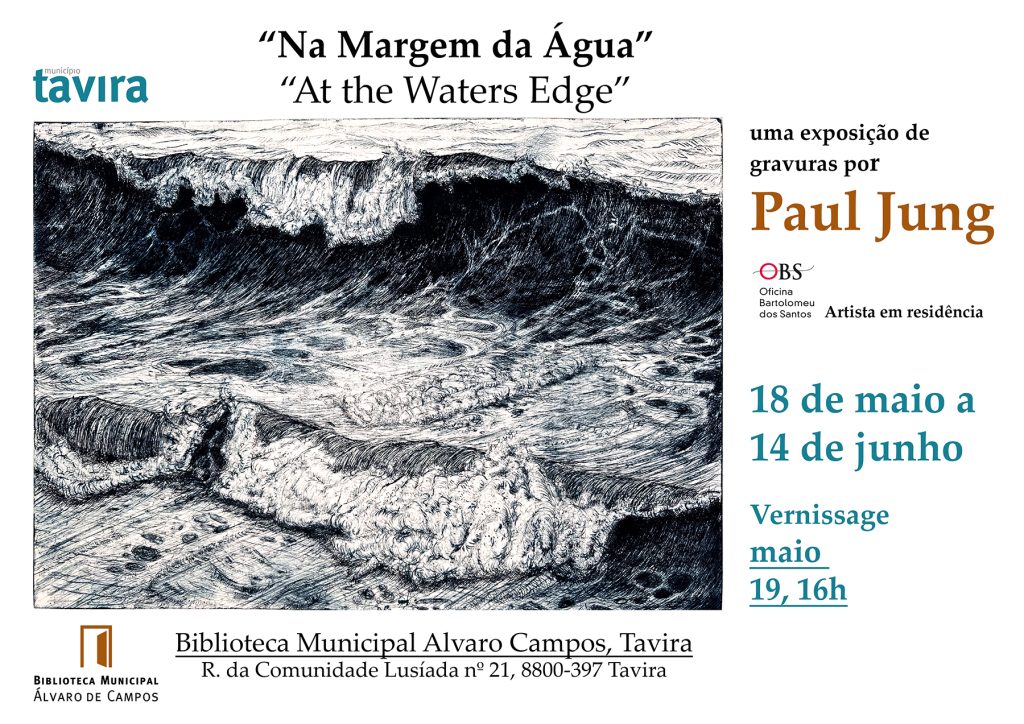

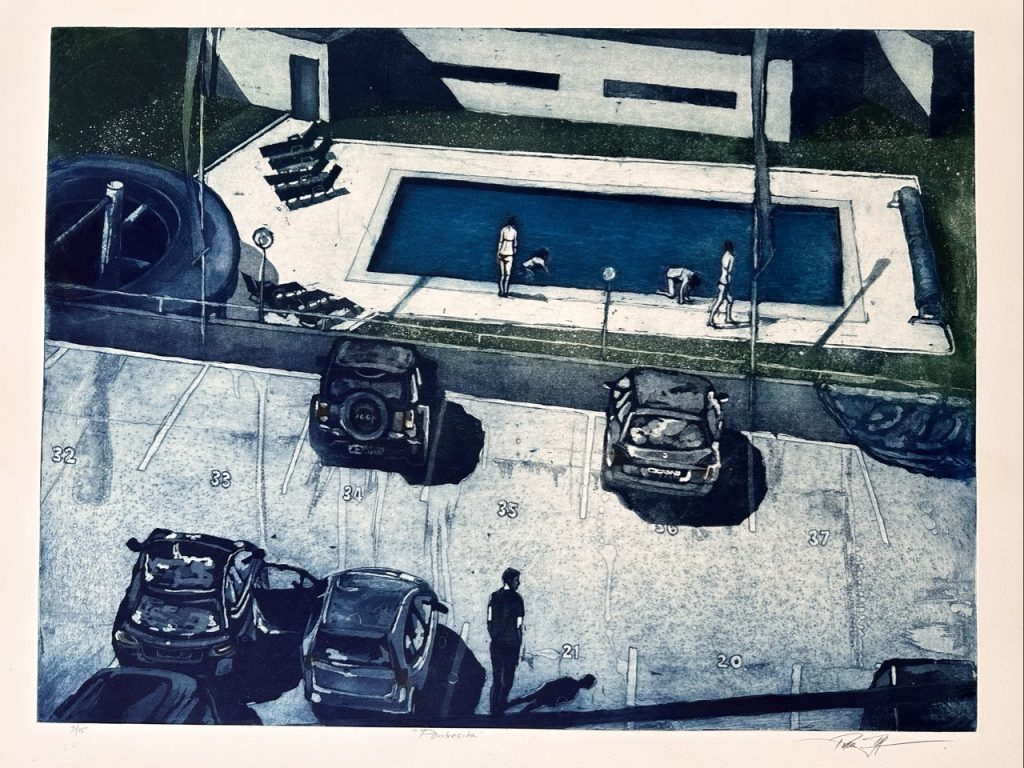
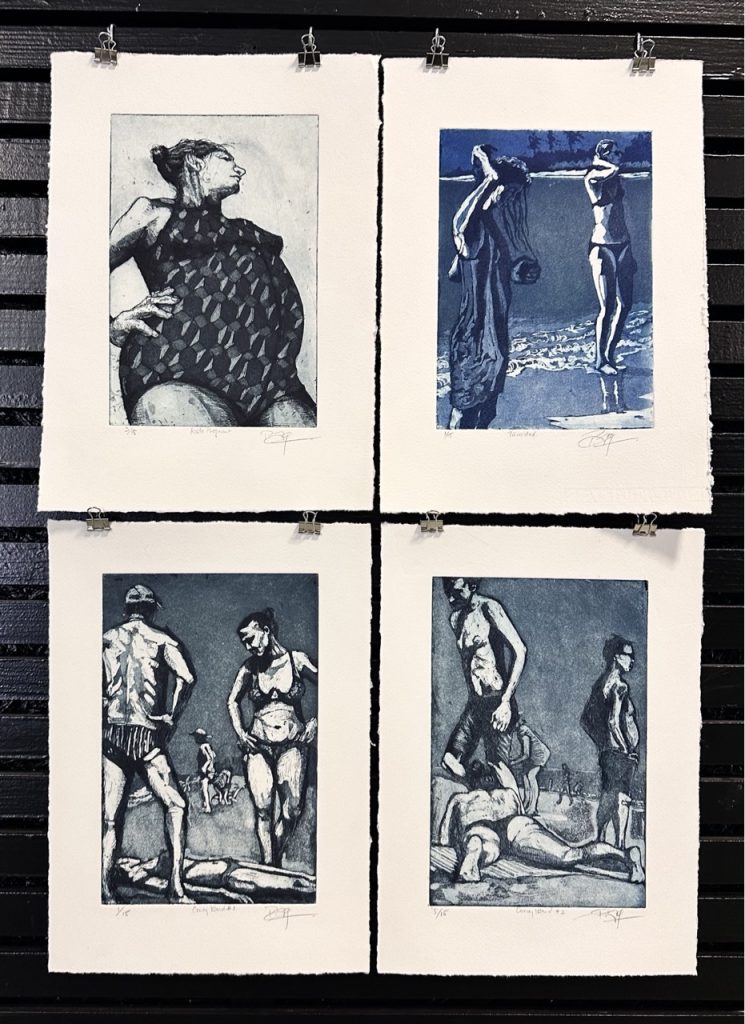
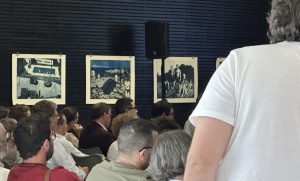
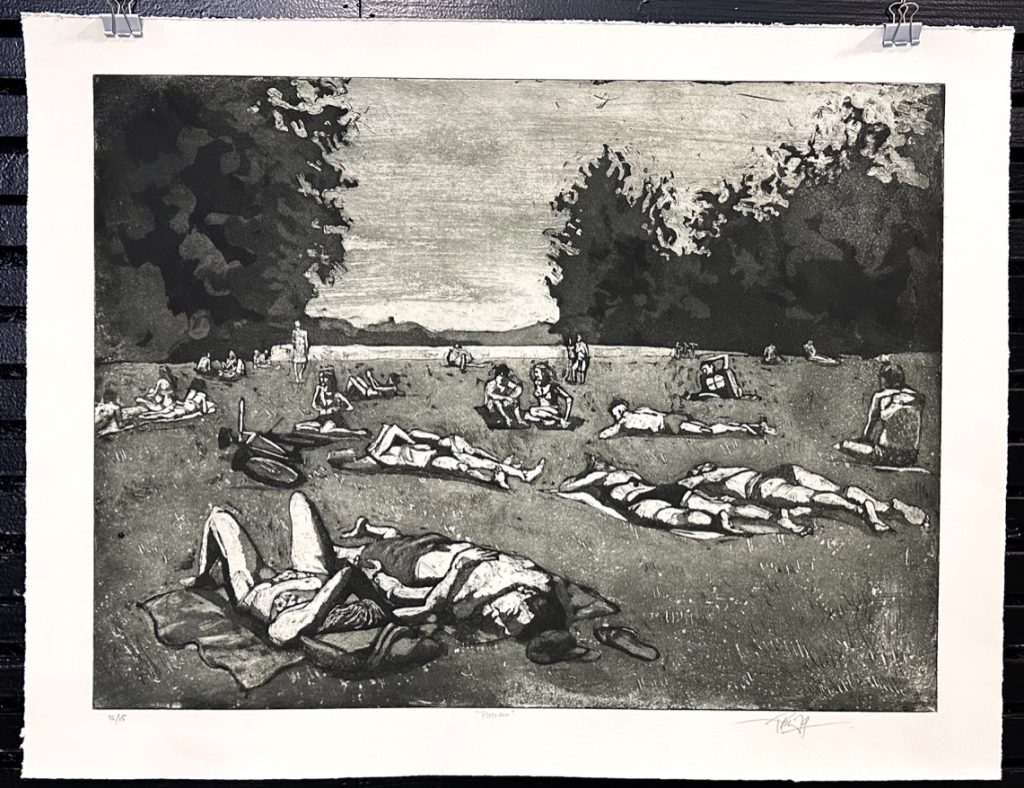
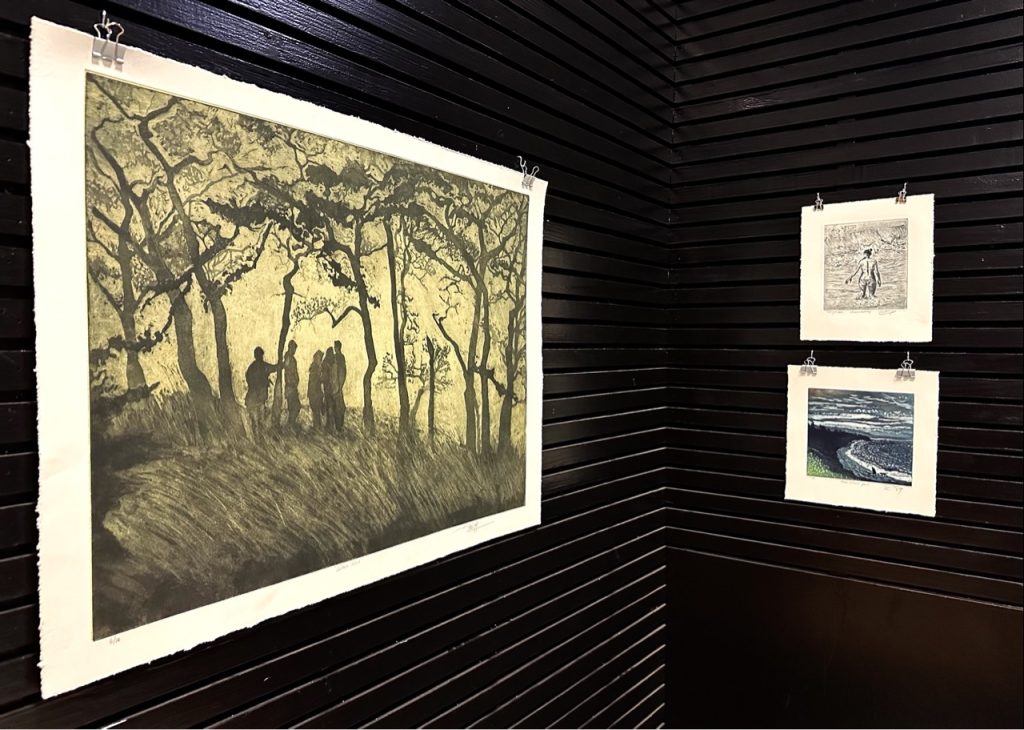
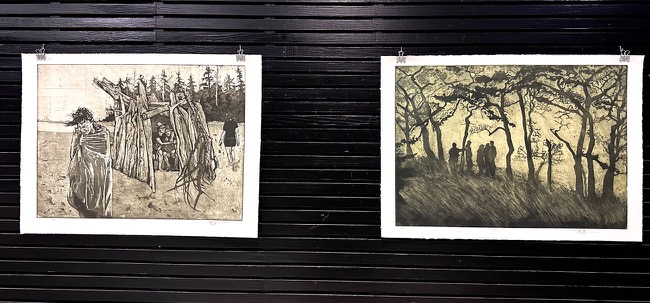
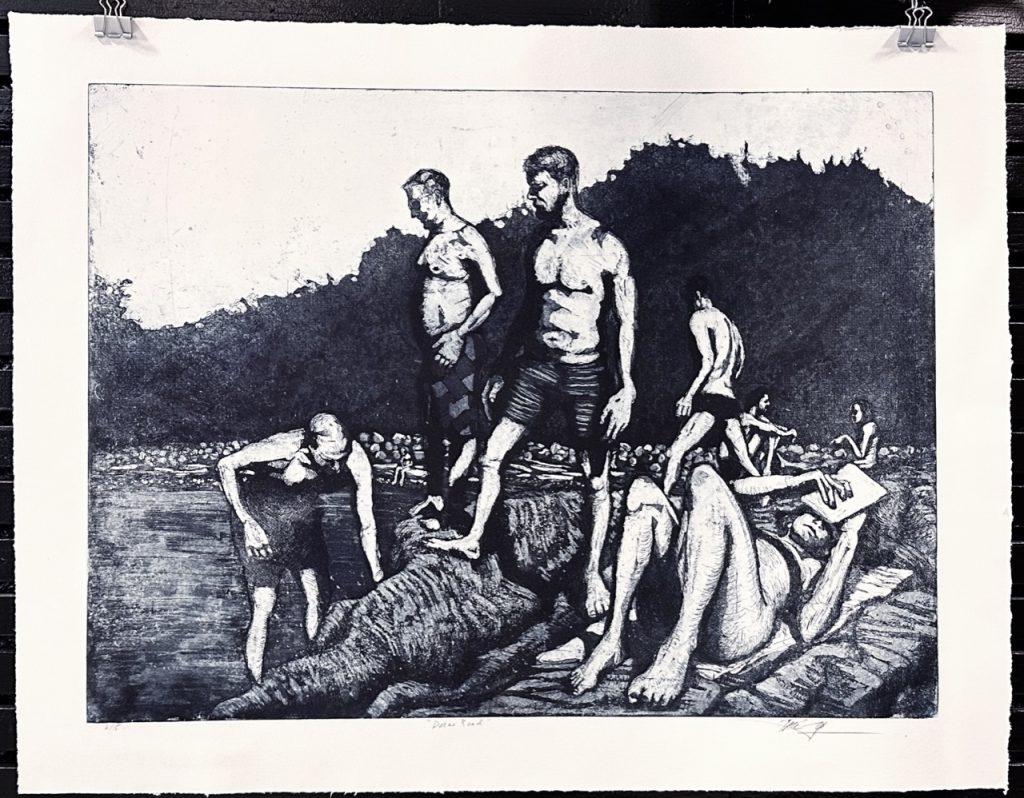

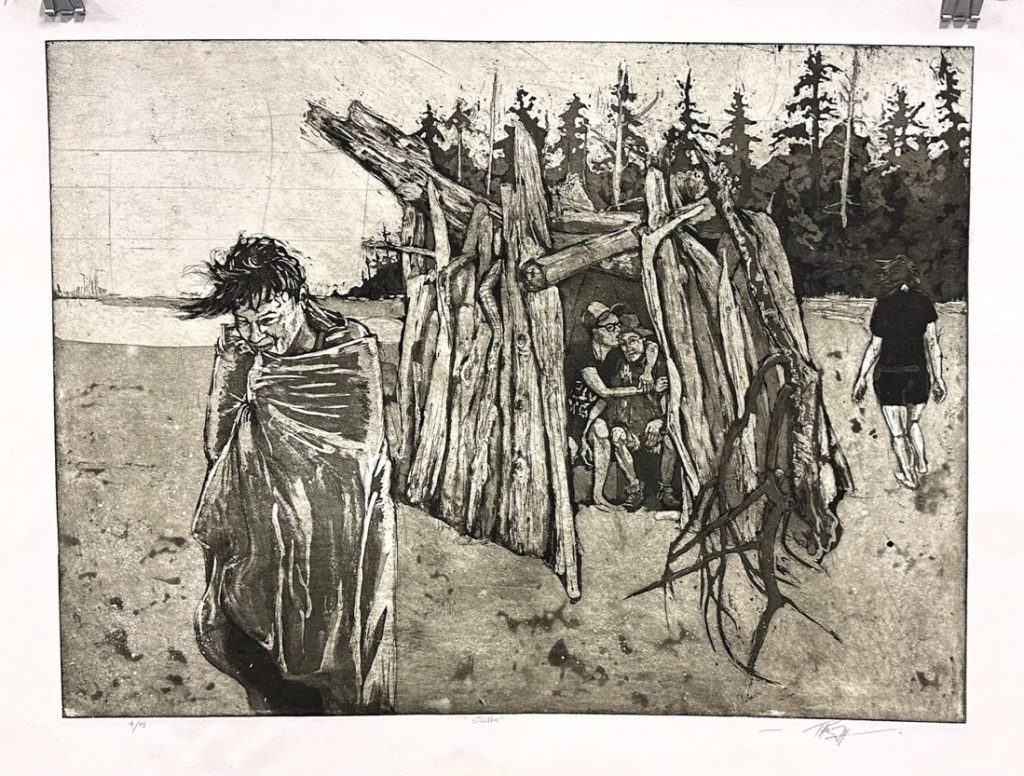
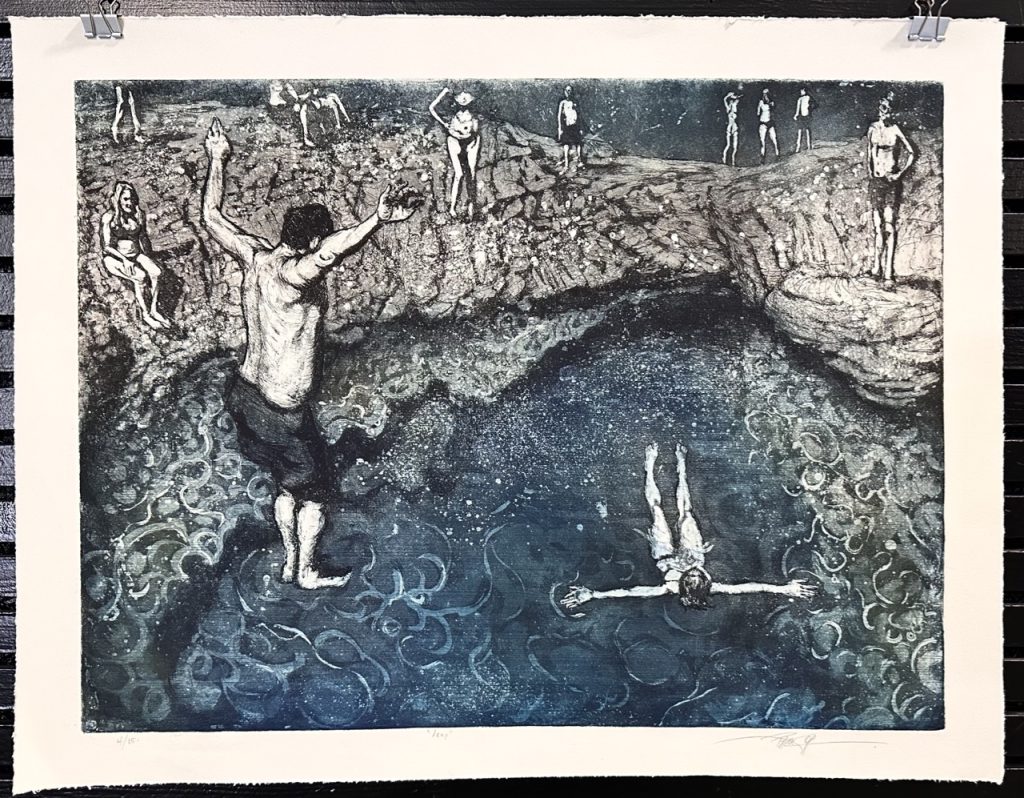
One of the most satisfying the aspects of the show was showing and selling Gaza. At a time when artists are being silenced for their support for the massacre of Palestinians at the hands of the Israeli’s it was very satisfying seeing hte support of intellectual community in Portugal. To show a picture portraying the horrors faced by Palestinians in a public institution in Canada would most likely be prevented and would at least be provocative. The opportunity to show the work, have hundreds of people in the community of Tavira see it, and finally be able to sell it and receive $500 that we were able to donate to UNWRA (an agency maligned by the occupying power, Israel, and whose funding was cut by Canada without any proof or due process).
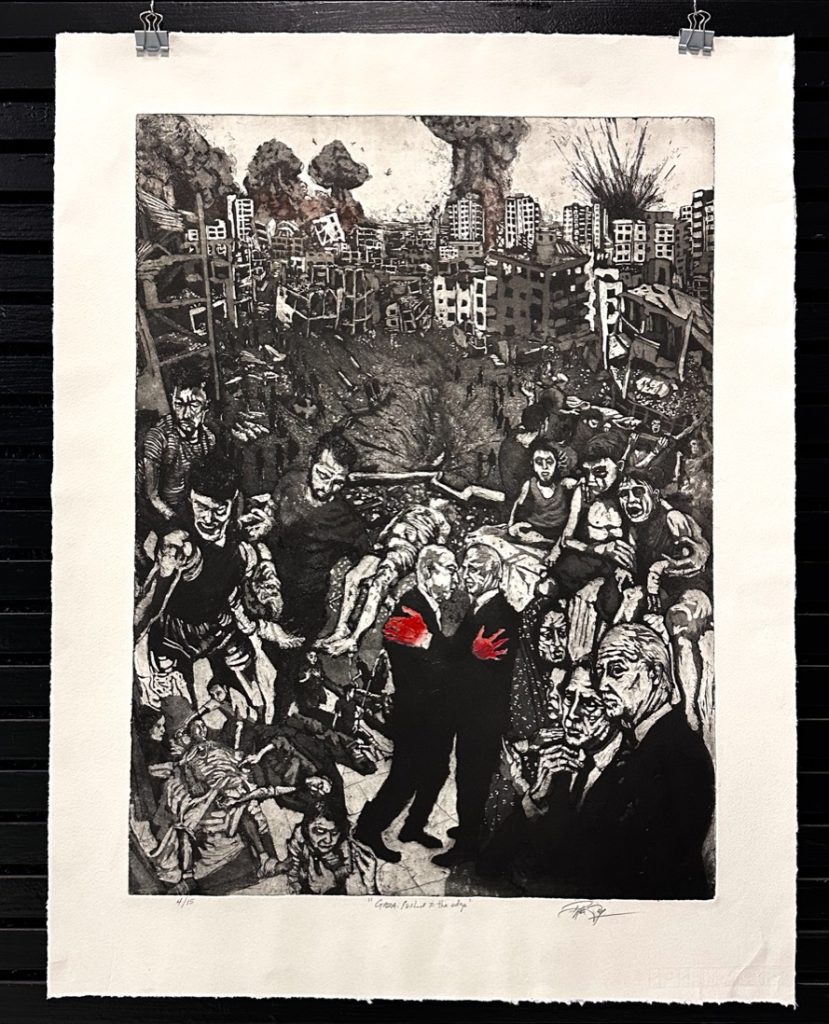
OBS Tavira, Portugal, 2024

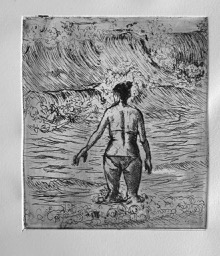
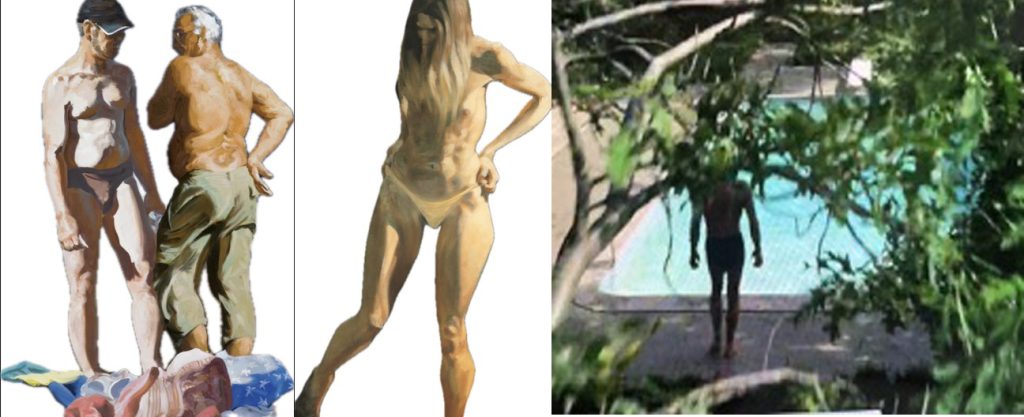
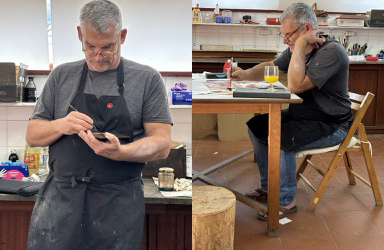

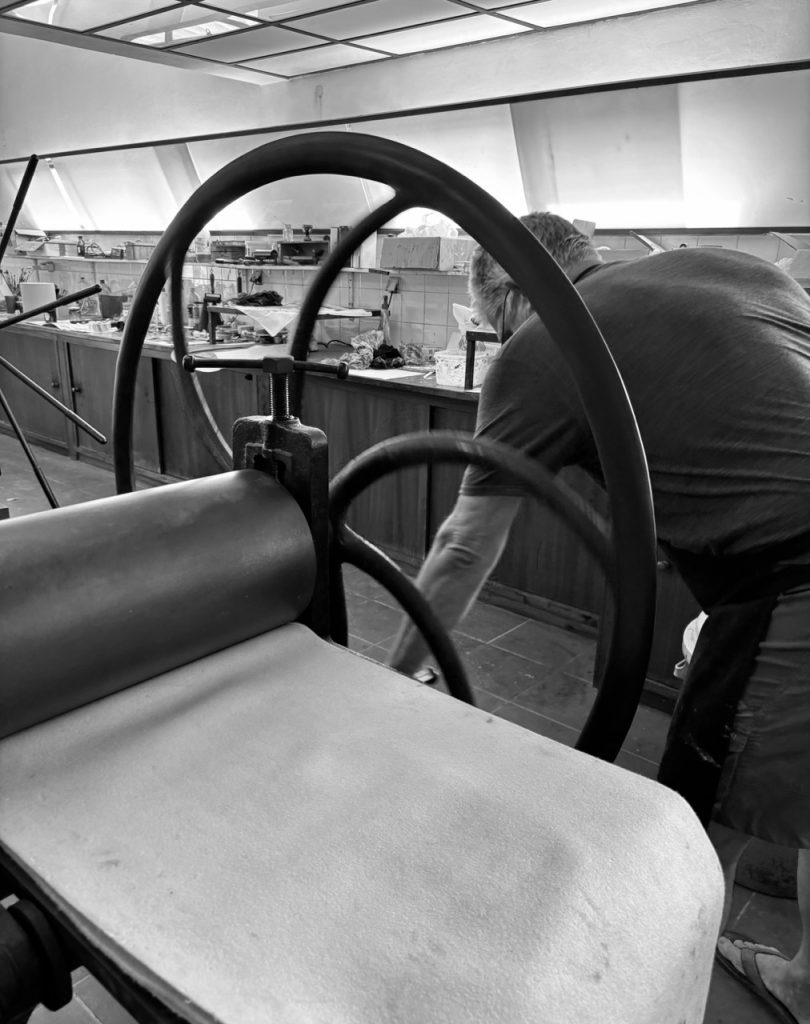
Pandemic Portrait Project
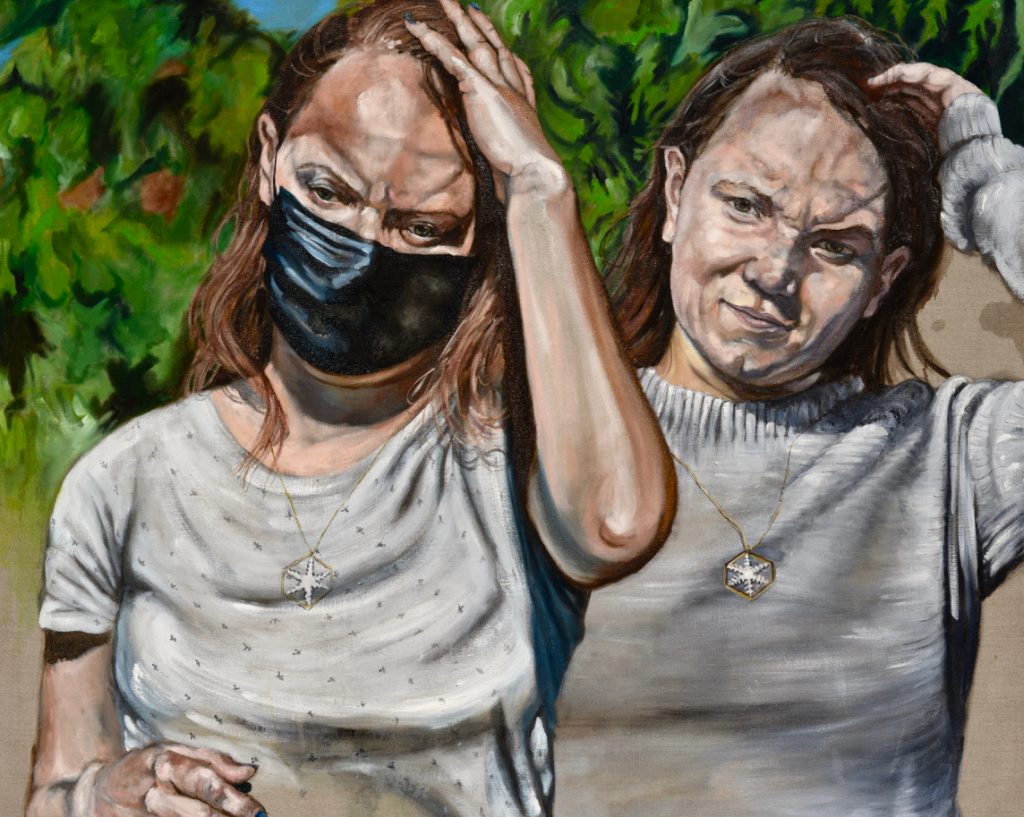
This trilogy of portraits that engage with the topic of masks and identity. The paintings have faces of the same person represented twice, once as a traditional portrait and second face with a mask.
The work acts as a realization of our collective desire to see beyond the mask. It plays with how ego and esteem functions behind our masks and also without them. In the sudden erasure of our facial identities we have simultaneously been comforted in our anonymity, annoyed that we cannot “show” ourselves, and wondered about completing the picture of the person in front of us. At a time when we are acutely aware of the power of the gaze (male and otherwise) the absence of the face, the power of the eyes, and our own voyeurism has become acute. We have existed behind a curtain and for the portrait painter the experimentation with these ideas is inevitable.
I was working as an instructor at the time of the doing this work and I had students volunteer to be photographed for the paintings. The pictures where then uploaded into Photoshop and side-by-side portraits were created. This provided a template that allowed the images to be drawn and painted.
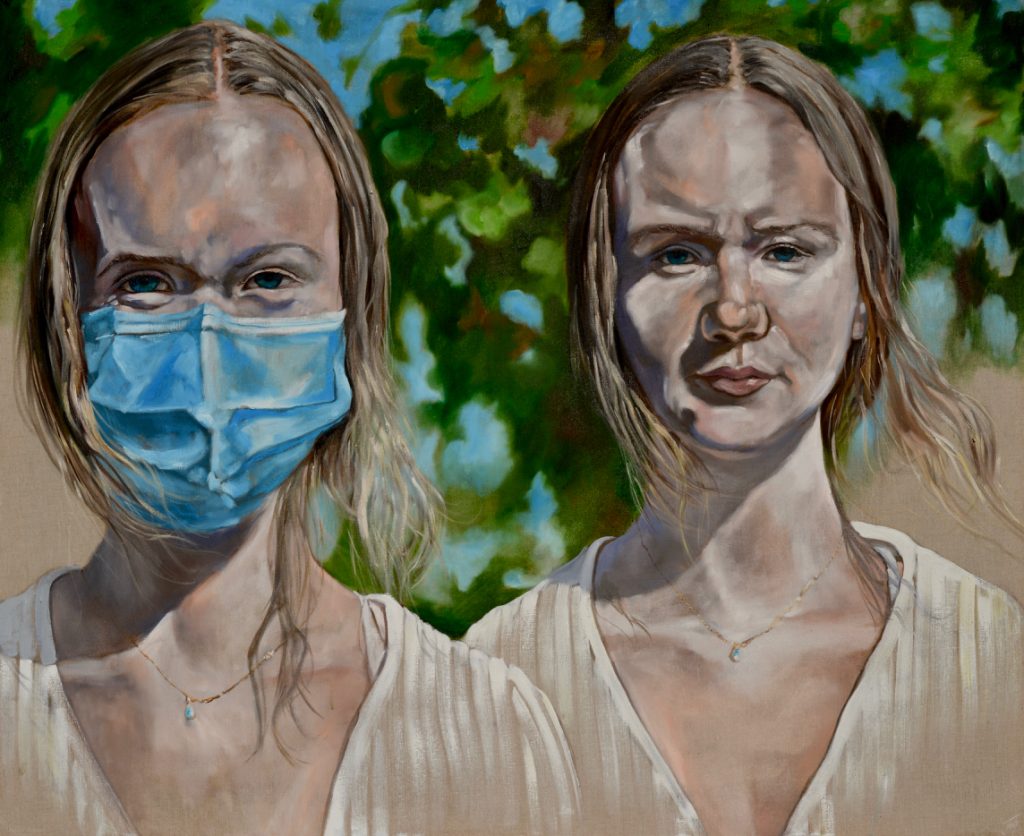
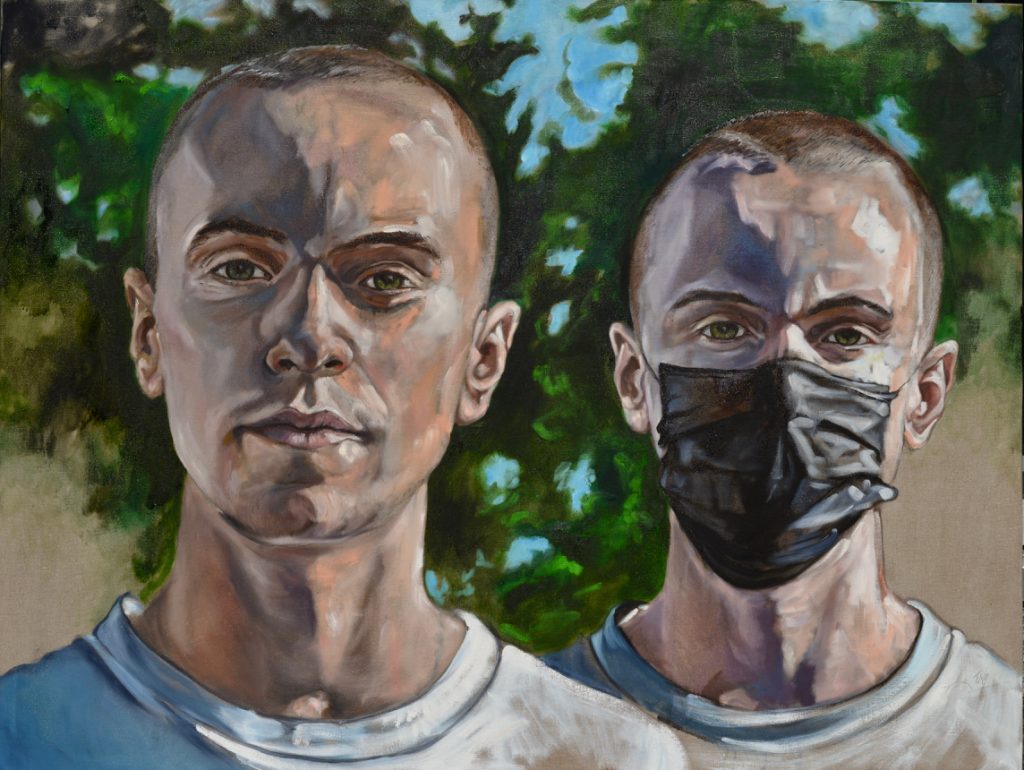
Mountains and Glaciers
The project features monumental 84” paintings of mountains and glaciers. Additionally, a series of large etchings 24” also depict large landscapes and included here are sketchbook pages completed in situ that were the genesis for the larger works.
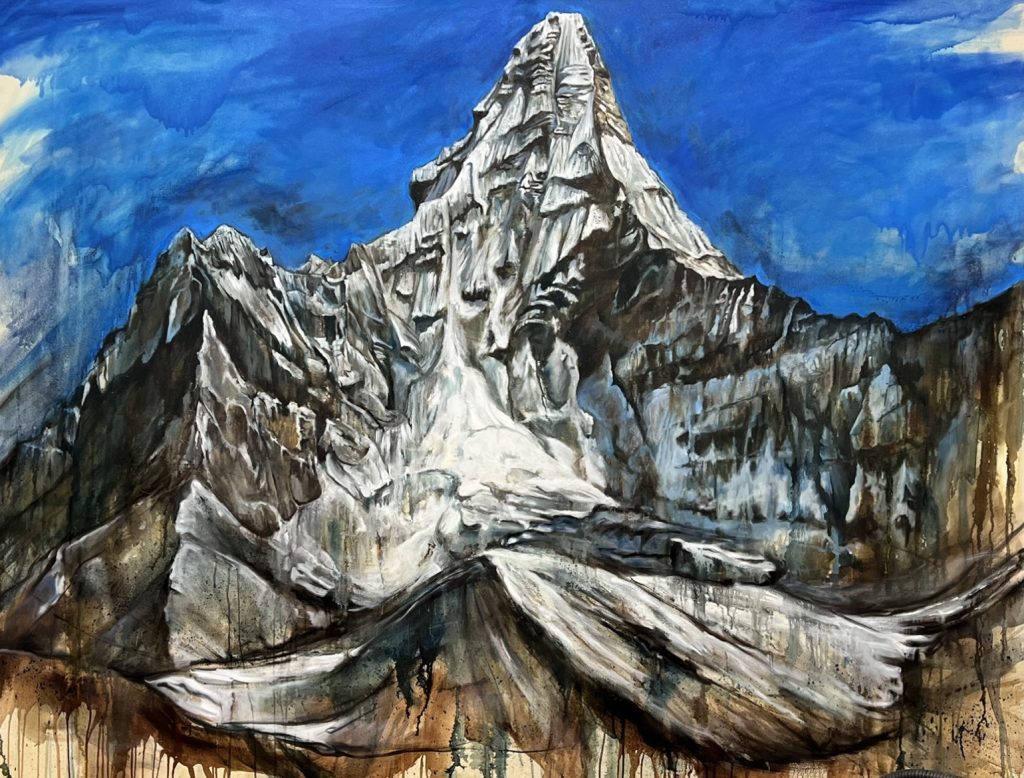
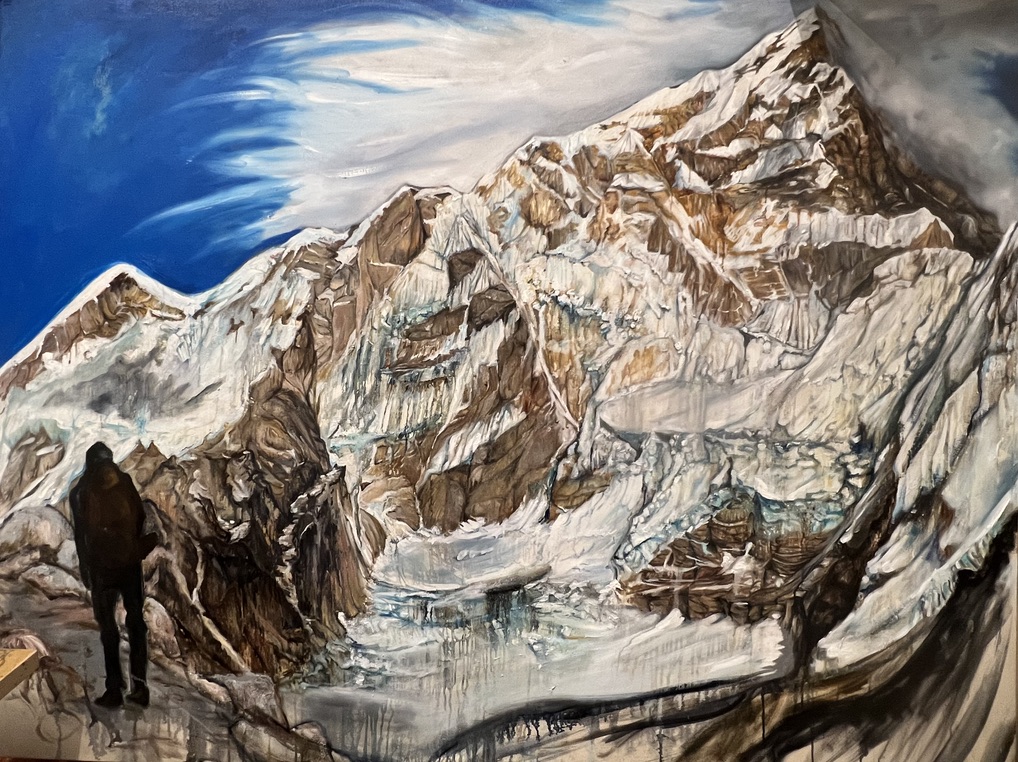
The scale of the paintings is intended to confront the audience with the physicality of singular and bold structures that are found in nature, but then invite them into the infinite number of details and complexities infused inside the picture. This interplay of scale and minutiae creates a push and pull within the paintings and etchings.
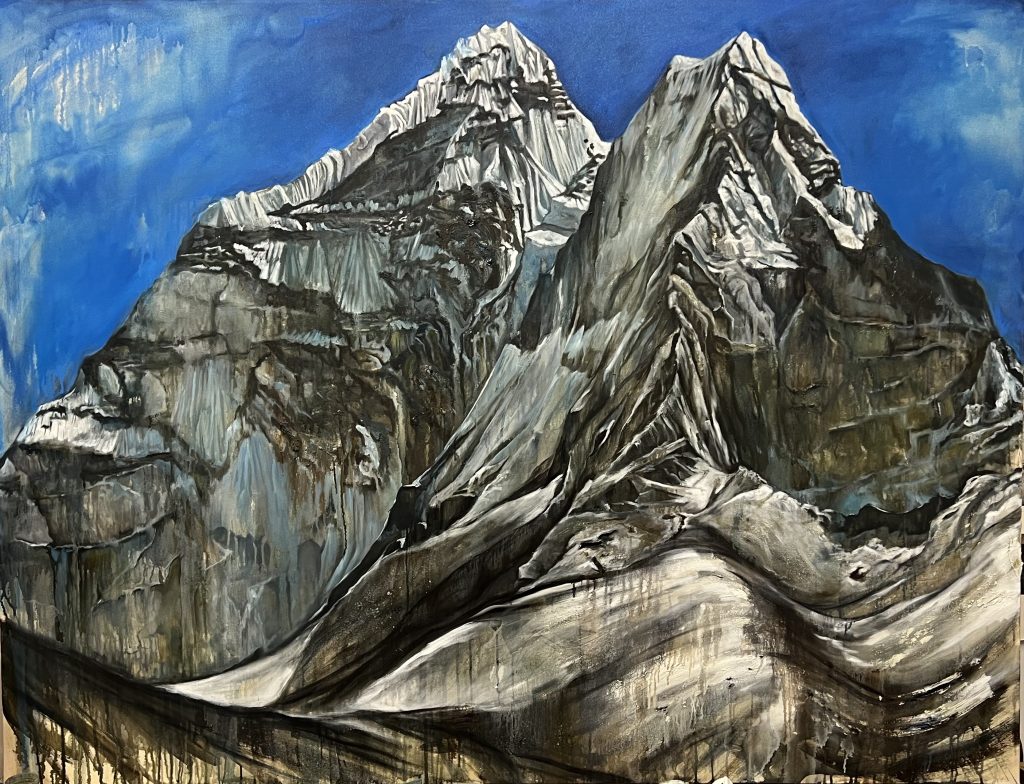
Additionally the works are a testament to drawing and the act of painting. The project speaks to the representation of nature through observation and transferring that imaginary onto the canvas through the hand of the artist. An enormous mount of work was done on each work drawing and redrawing, painting and de-constructing the space to build both the simplicity of the structure and complexity inherent in a landscape. The goal of the works is to provide a venue for the exploration of seeing and then engaging the audience to an appreciation of the creative possibilities inherent within drawing and painting. The show wants to reveal the process of image construction from sketchbook inceptions to showing the paintings as the culmination of the dynamic act of making. These representations of mountains and glaciers want to engage an appreciation of nature within the audience and use the imagery as a venue to explore mark making. The etchings again develop similar aesthetic sensibilities of scale, simplicity and complexity. The details inside the landscape are constructed though intricate drawing while the sweep of the mountain caught in the light is highlighted using aquatint.

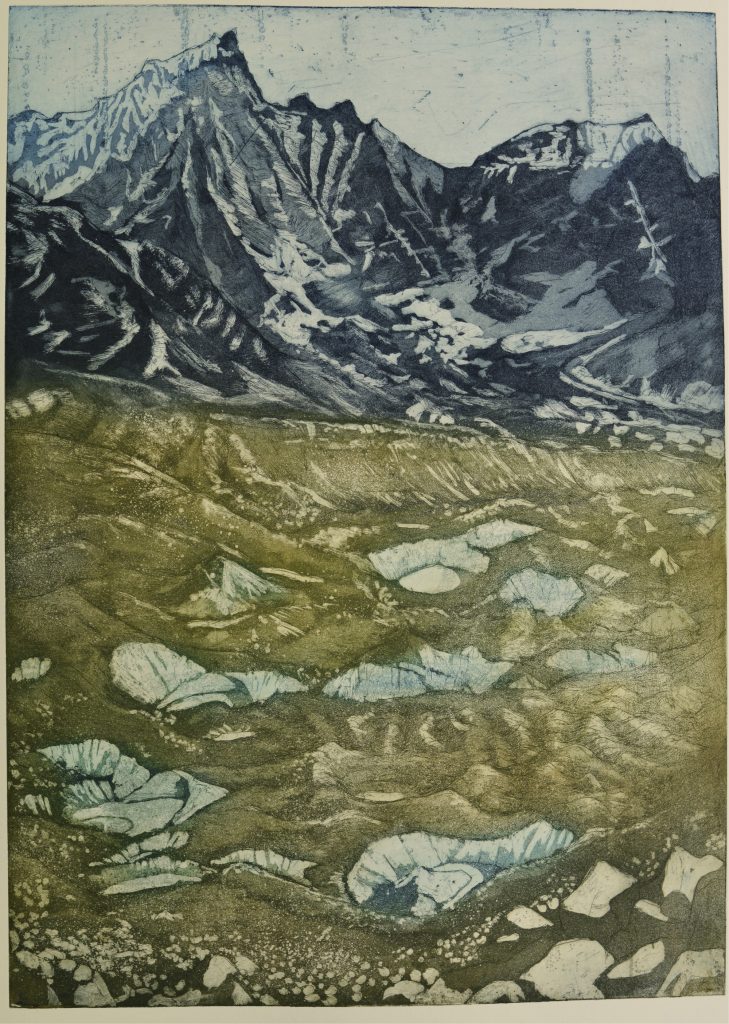
The works themselves evolved from travelling and trekking in the Himalayas in 2014 and 2017 and also walking on several trips in the Alps. When in the mountains I took photographs and made sketches and these pictures and studies are the basis of the works here.
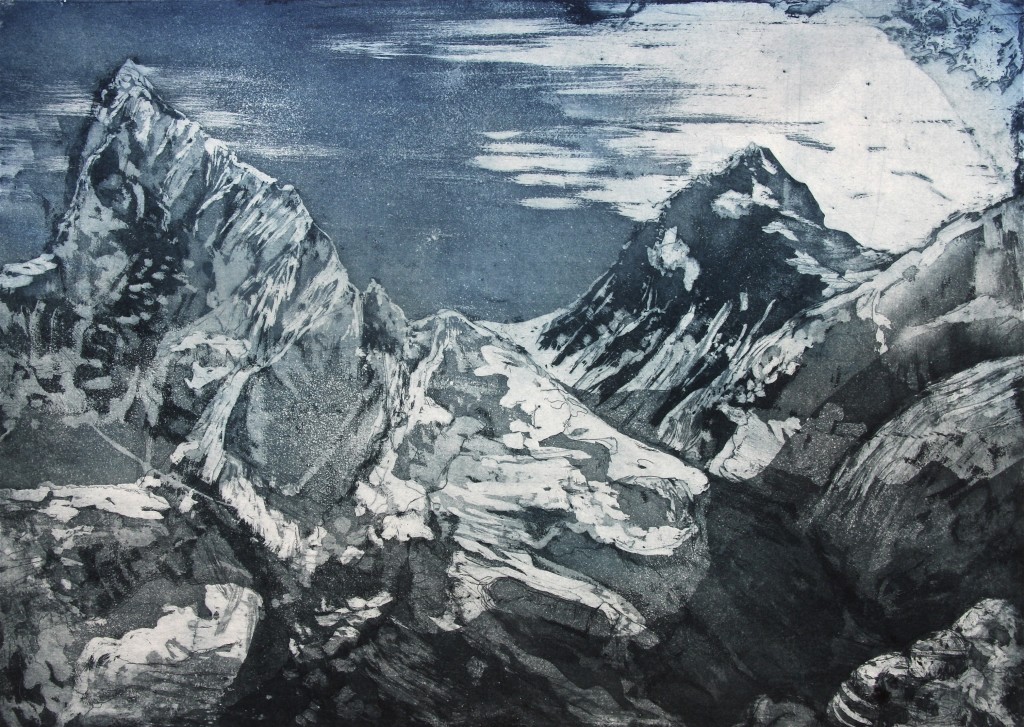
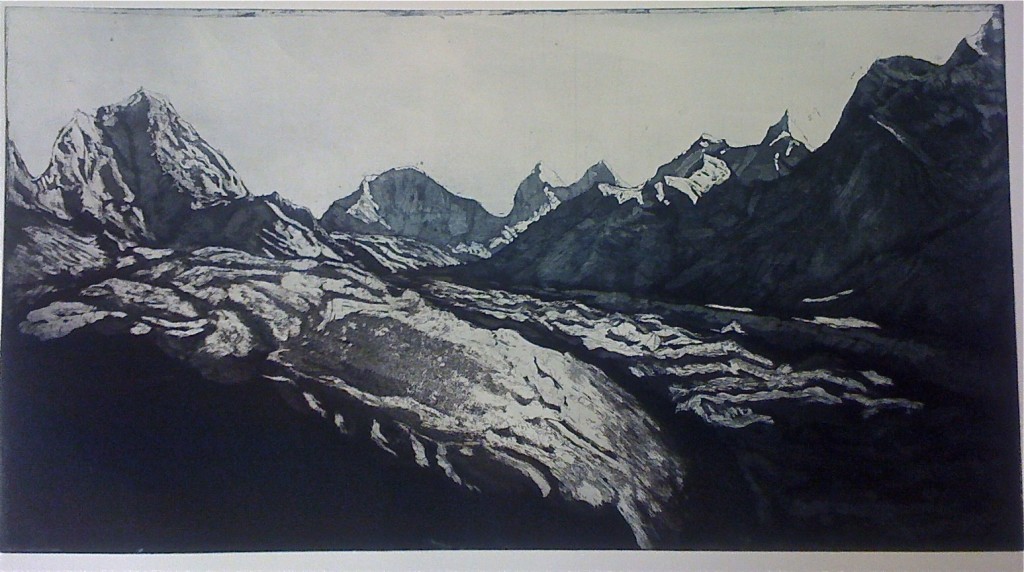
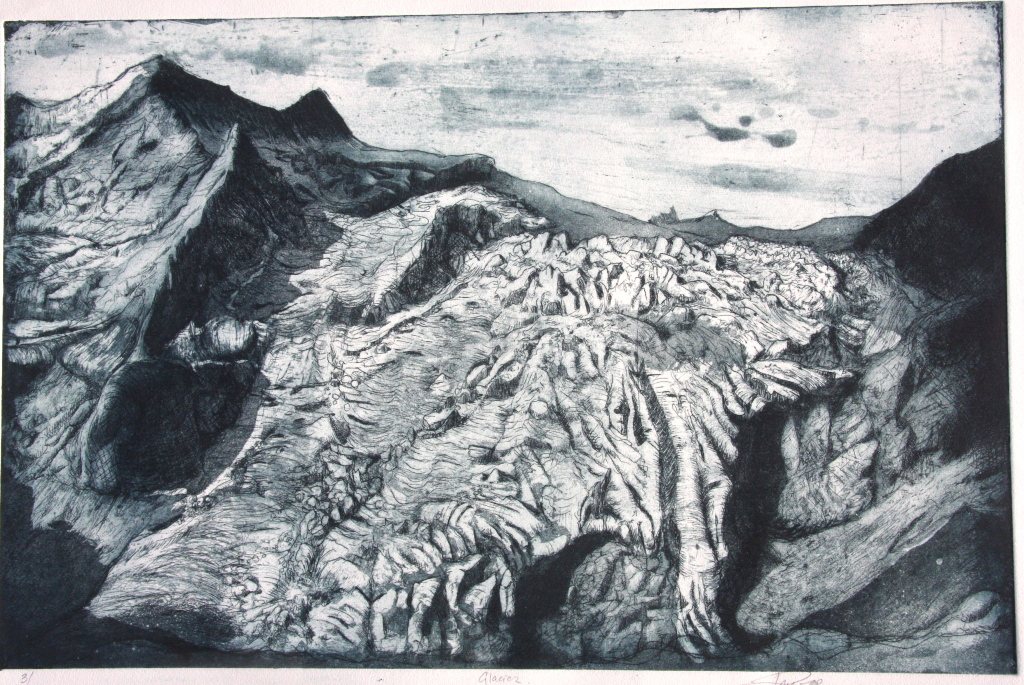
Images of the paintings and artist in studio at Printermedia Residency at Howe Street Studios in Vancouver.
These are a few of the sketches as they are the genesis of the larger works and further develops ideas of process involved in art making, drawing, painting, and printmaking
West Coast etchings
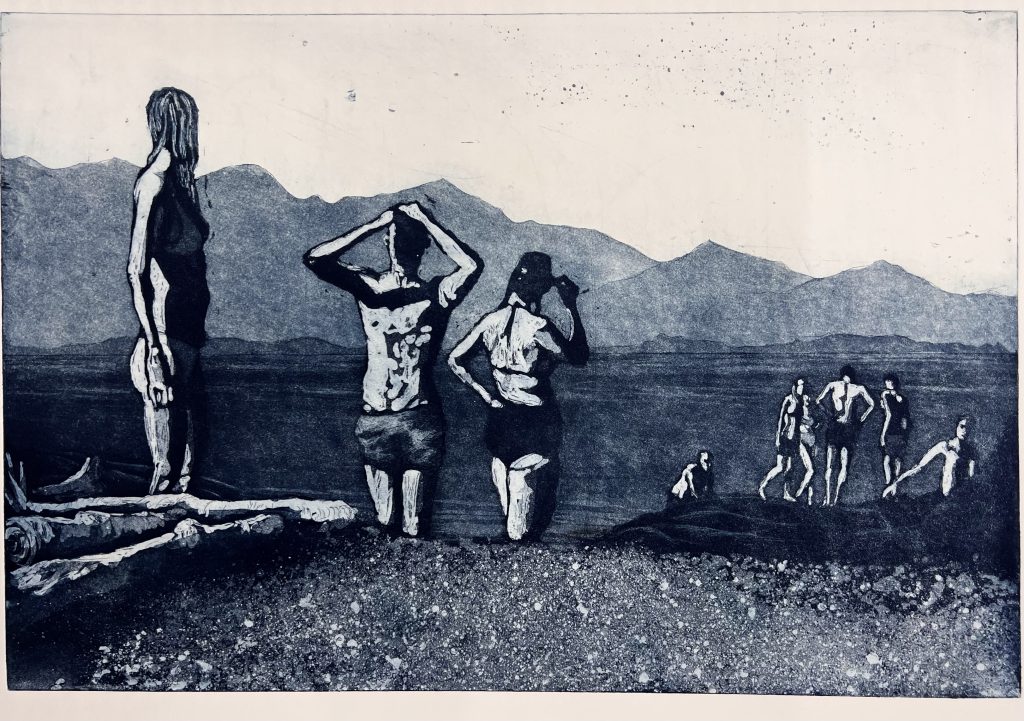
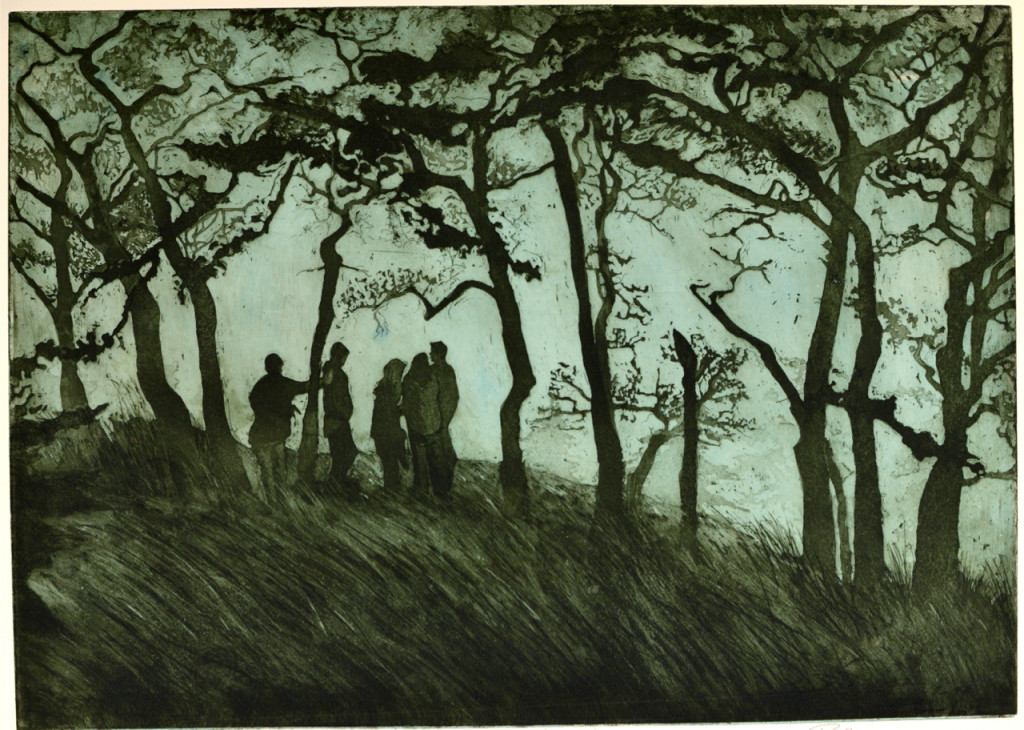
On the coast we live outside of History. War, famine, class struggle pass over here not disturbing the utopian bliss we have constructed. Since the environmental protests of the 90’s large historical movements have been absent from our consciousness, and we have filled the void with the drama of our own existence. Especially the young are seemingly insulated from the burdens of the past. The images inside this body of work use landscape as a frame for the space between the social and personal; landscape as the beautiful, rugged, wet, backdrop for the theatre of our own experience.
In part the work is derived from being at a distance both generational and national. Growing up in South Africa I was acutely aware of the world around me because politics effected our lives. As a teacher I worked with young people whose national lack of political awareness is compounded by time’s erasure of the past. The work utilizes imagery that explores the absence of memory and is interested in exploring the texture of existence here on the West Coast. The imagery juxtaposes history with the personal, opening a conversation of individual struggle in an absence of want.
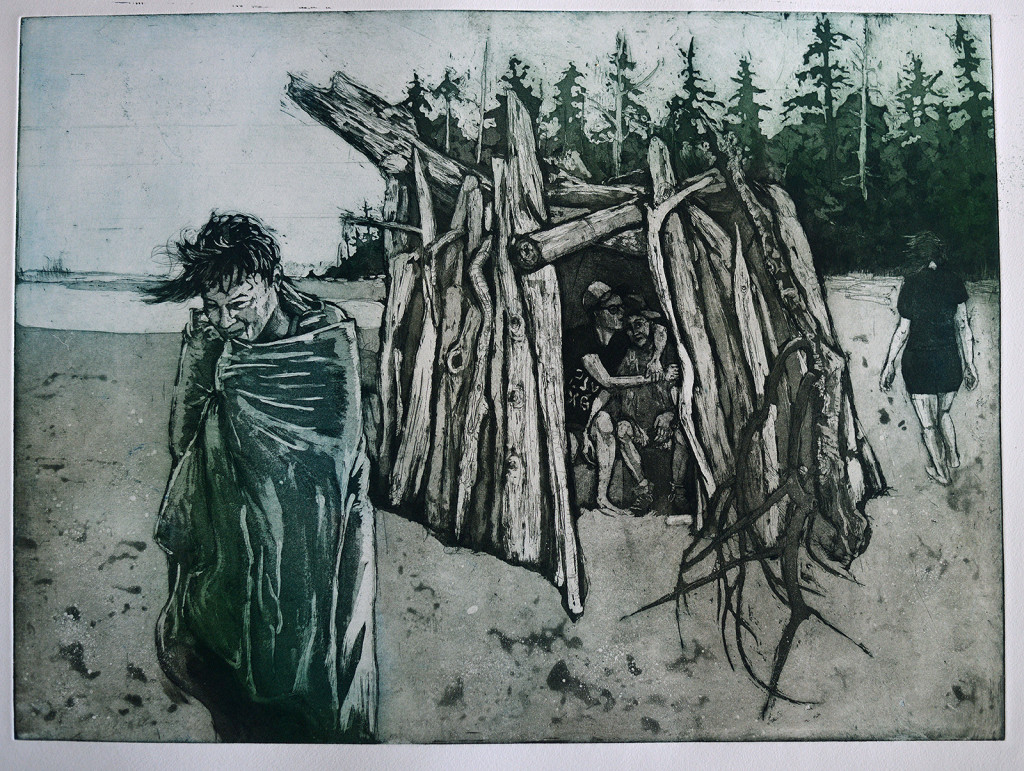
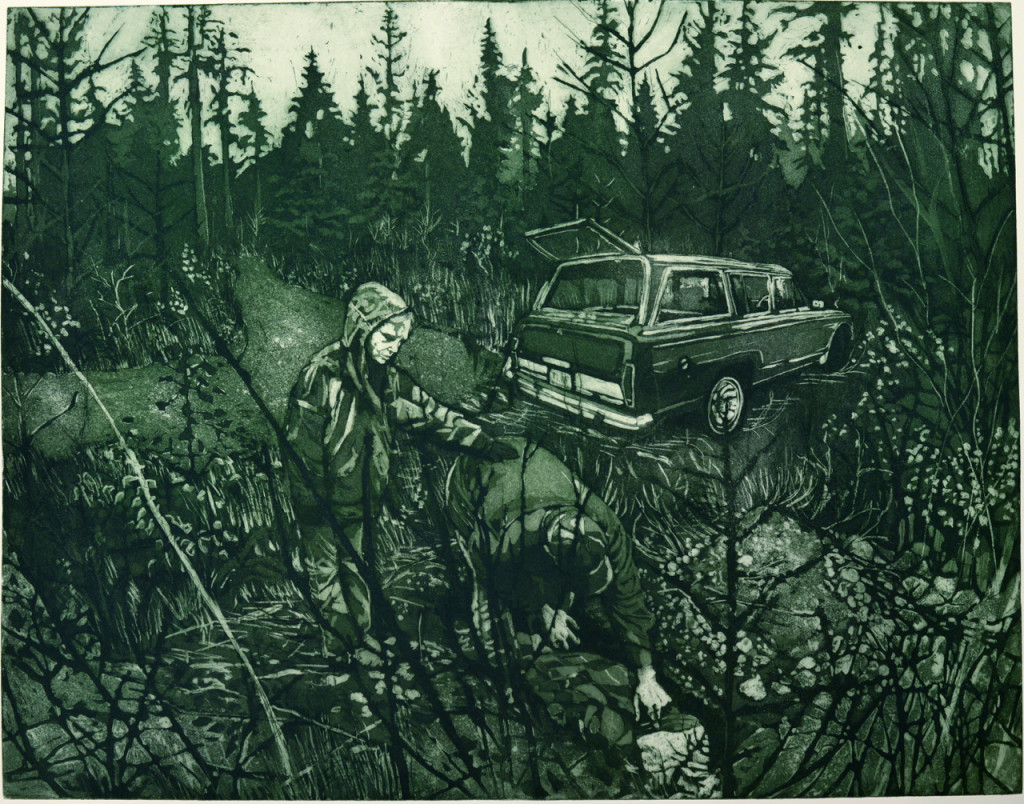
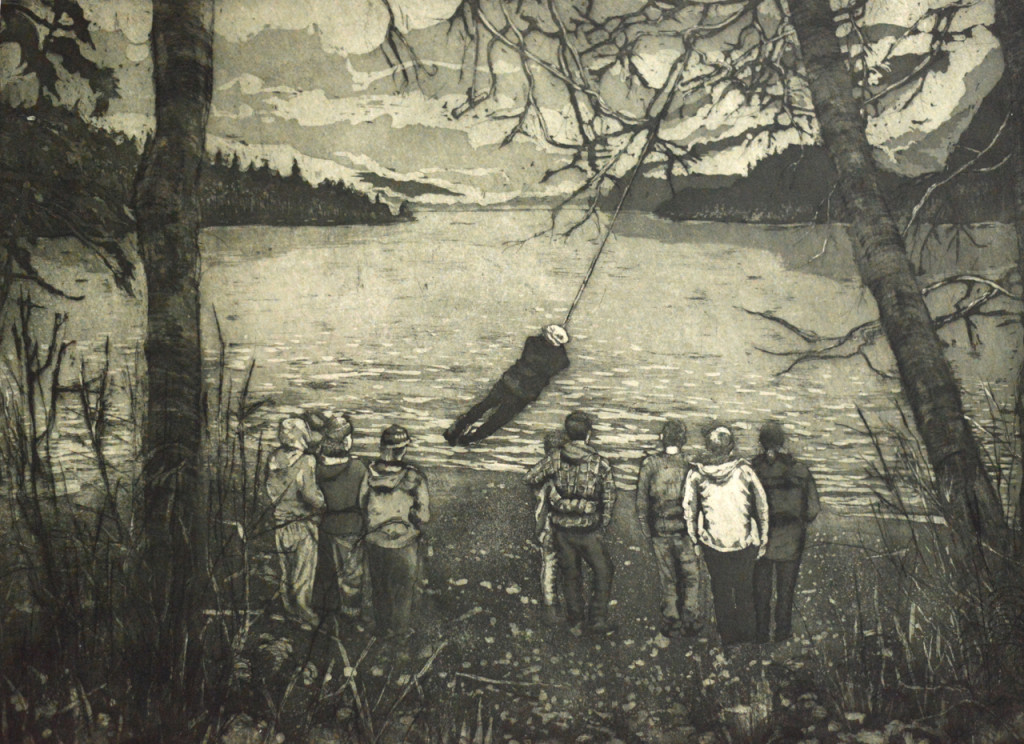
Rope Swing is a particularly important image inside the body of work because it illustrates the idea of “being outside history”. The boy swings above a group of on-lookers, the swing is harmless, yet the image is disquieting as the rope is a signifier for something darker. A tension is built between the innocence of the early morning play juxtaposed with scenes that are part of our cultural experience of on-lookers in the antebellum south. They are not witnessing a murder, no self harm is being witnessed, yet the figure at the end of a rope casts a shadow over the group generating a space I want the work to hover in.
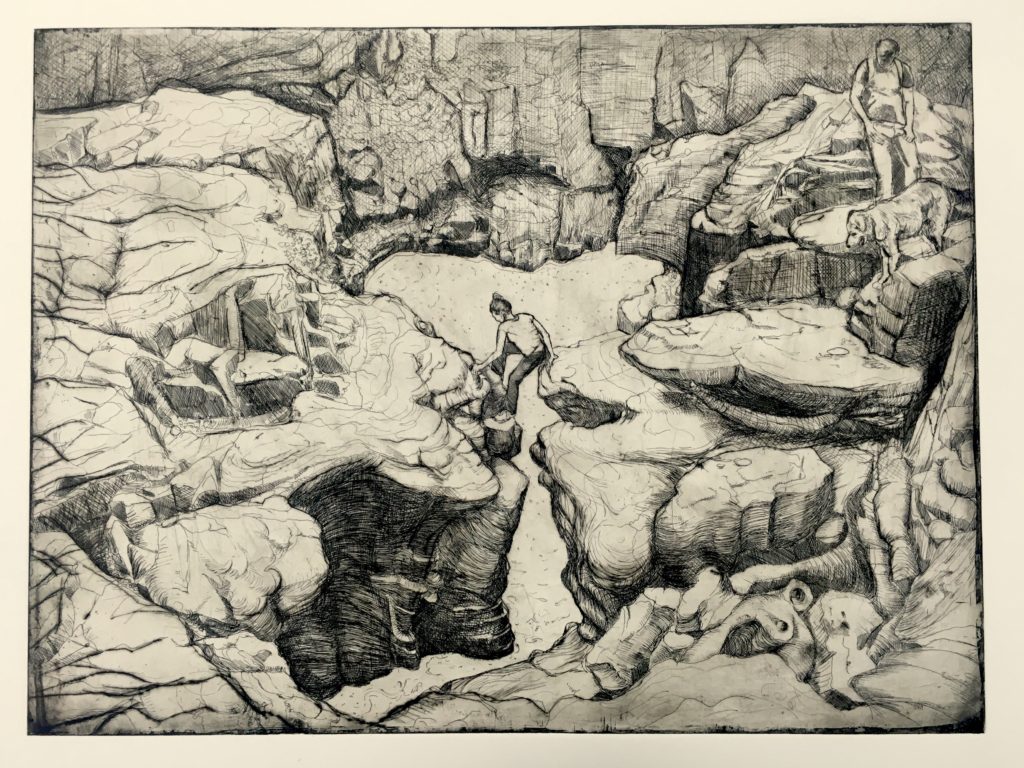
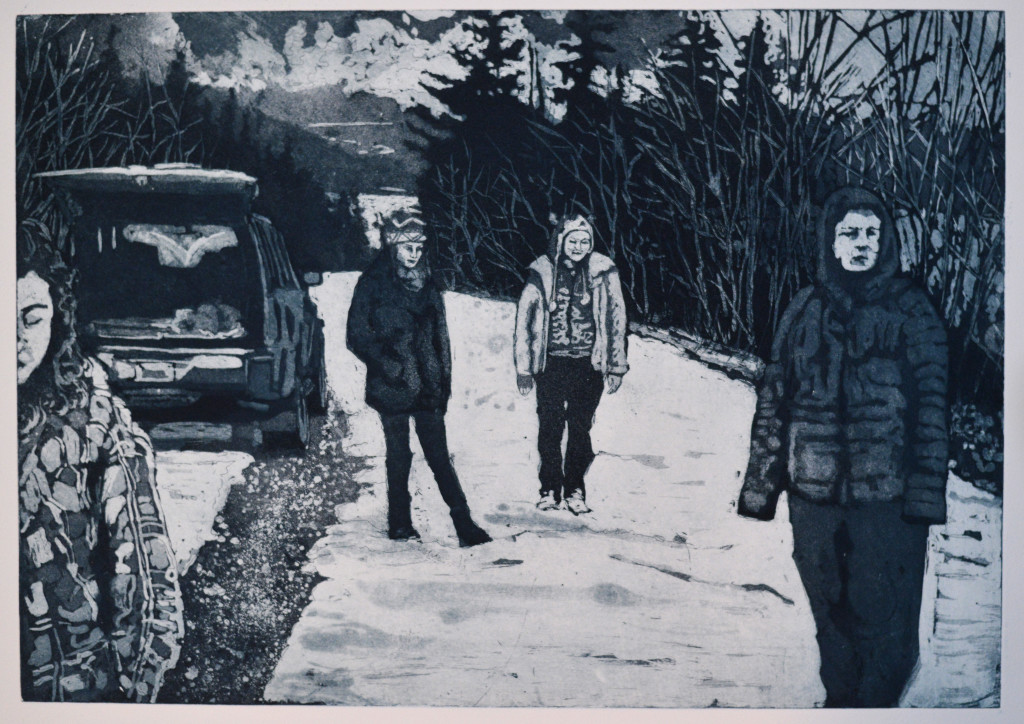
The pictures exist in a realm of memory and on one level they function as nostalgia and on another they strike an underlying sense of disquiet. At a time when discussions of privilege are so prevalent the images jostle with this notion juxtaposing a sense of empathy with a sense of our ahistorical existence
The best work in the series combine the lightness of a moment with a discordant note of apprehension, Young people fashion a swing, a car is parked in the woods, a couple takes shelter amongst logs on a beach, people look over a precipice in the fog, the absurdity of large flotation toys are carried towards the darkening trees.
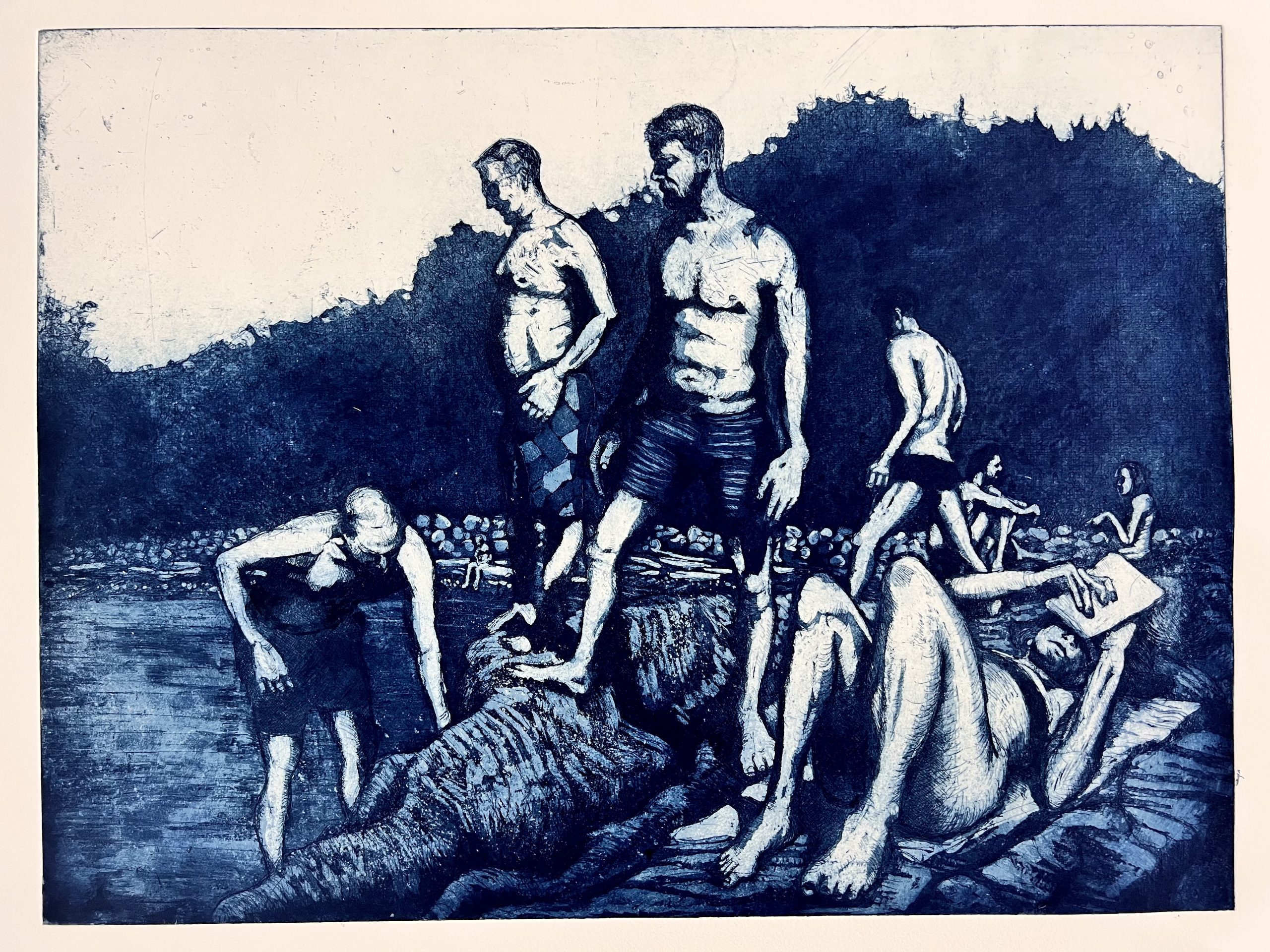
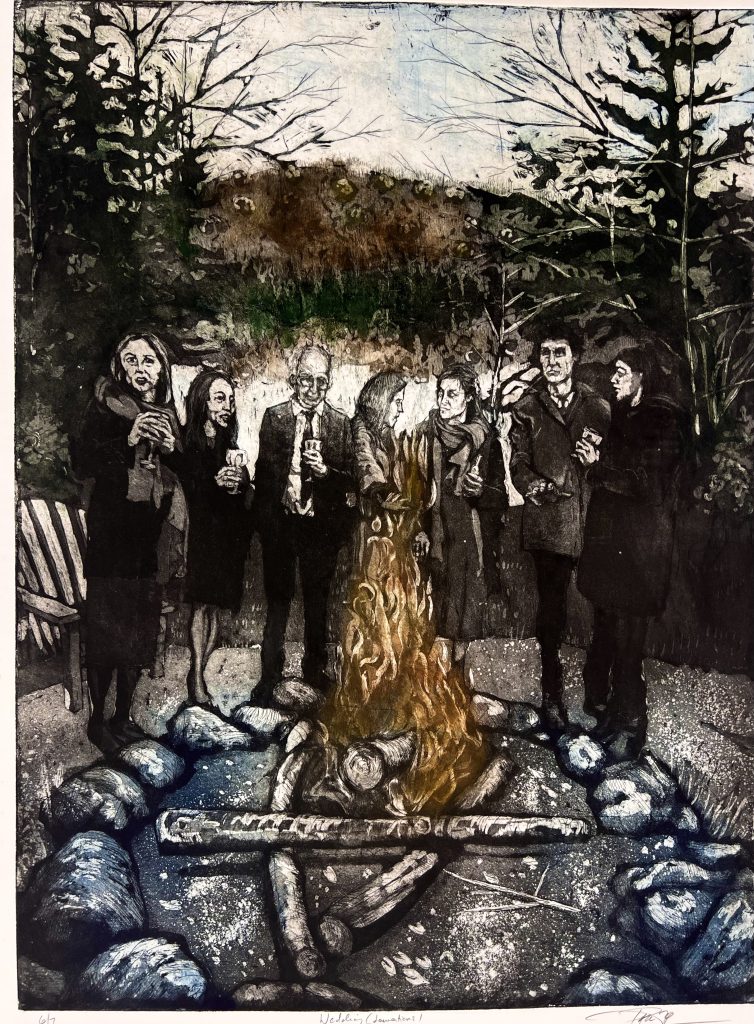
Narratives
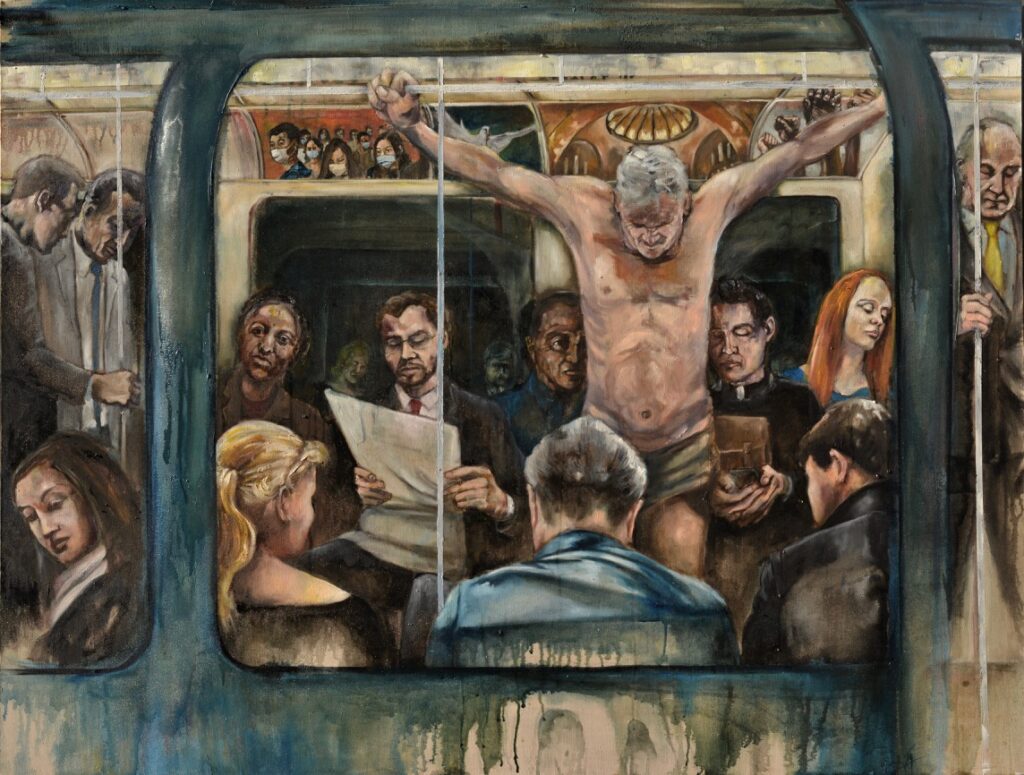
Art rooted within the realm humanity, enables a meaningful aesthetic and story telling is the vehicle of towards are a relatable art. The narrative form opens literary possibilities of analogy and metaphor, it builds a frame for the political, and it becomes personal exploring expressions of the psyche and emotions. However the story in art, as Walter Benjamin laments, is increasingly becoming “remote”.
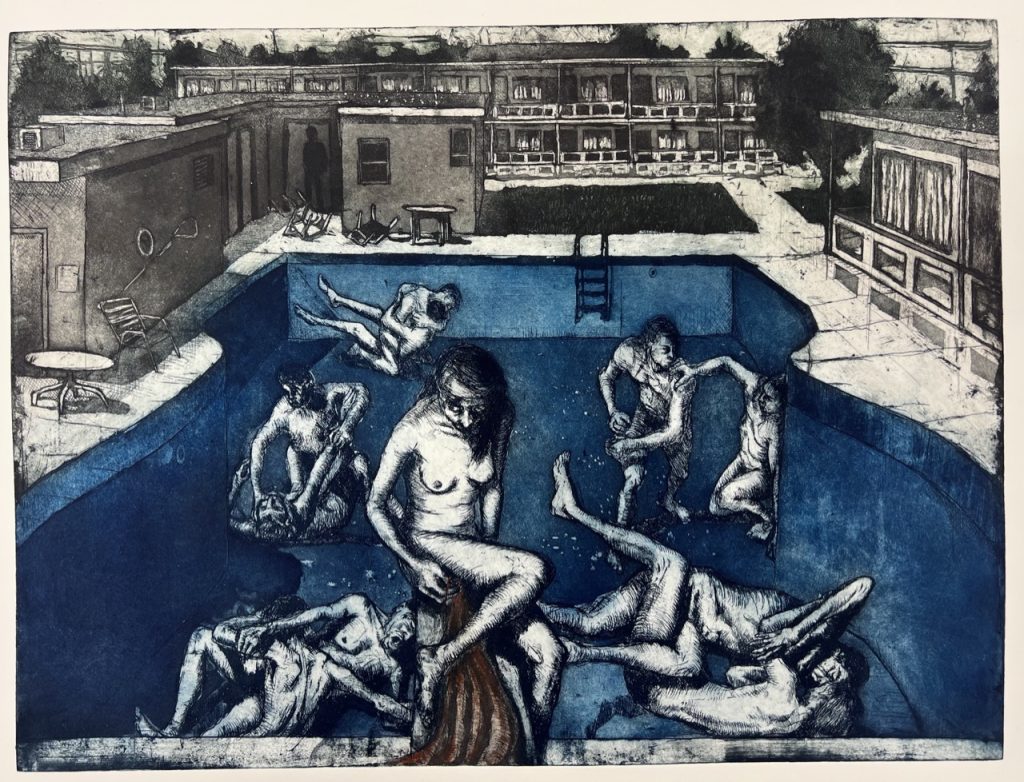
In a meditation on fiction Ken Lerner book re-commits to the novel because in-it lies “more interesting possibilities than determinism”. We are increasingly seeing people defined by their skin-colour, sexuality, age, gender, class, and privilege, the story allows us to see the possibilities and choices beyond these classifications stories explore what takes place when people collide. Returning to Benjamin he says: “it takes the representation of human life to its extremes … gives evidence to the profound complexity of living”. Continuing Lerner echoes Benjamin when he says “By integrating the social process with the development of the person (stories) bestows the the most fragile justification on the order determining it …it is this inadequacy that is realized”
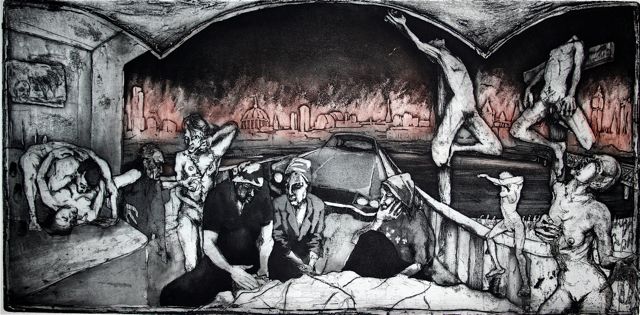
Reading, “My Name is Asher Lev” one is struck with its utilization of the Crucifix as the culminating conflict in the central axis of the book. Potok writes about painting a crucifixion, “For all the pain you suffered, for all the torment of your past and future, for all the anguish … For (God) whose suffering world I do not comprehend, for the love I have, for all the things I should have remembered but have forgotten, because the crucifixion is the aesthetic mould into which you can pour a paintings ultimate anguish and torment.”
This why crucifixions remain a potent iconography. Another author Sherwood Anderson writes “Everyone in the world is Christ and they are all crucified.” In this sense we can all identify with the image of Jesus nailed to the cross.
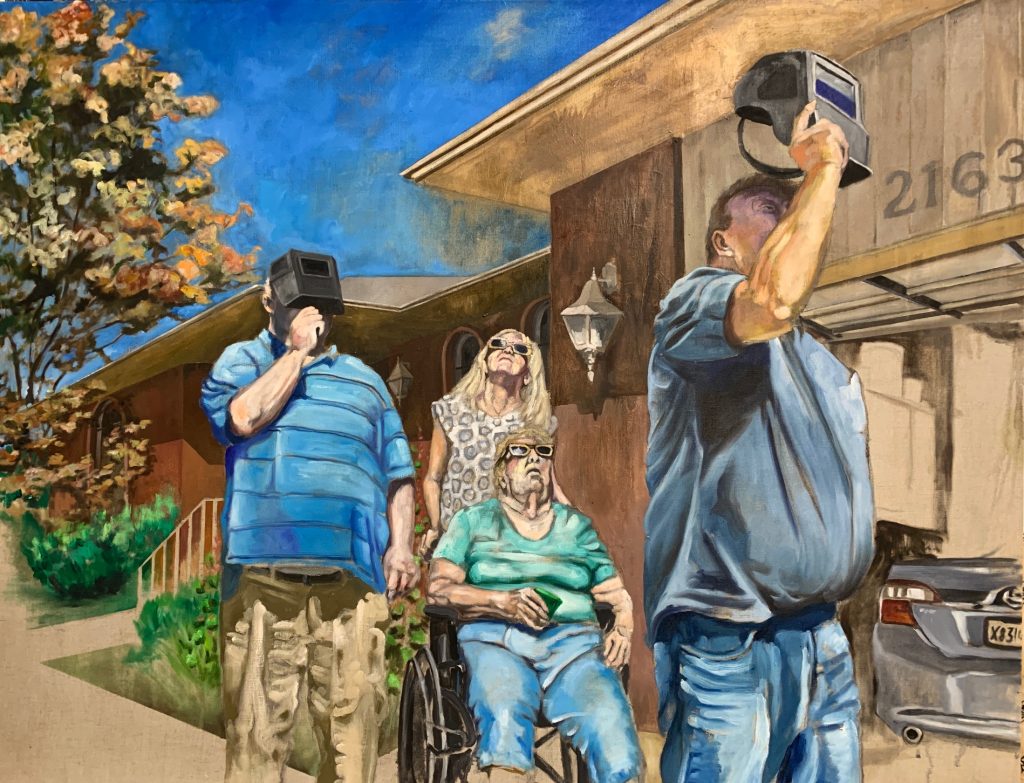
Or from another perspective Kundera refers to the idea of “Eternal return” in his “Unbearable Lightness of Being” when referring to life lived as light and heavy. Picking up on the existentialist notion that we should act as if everyone should do as we do Kundera discusses how heavy an existence this notion presupposes. Borges reiterates this idea when he says: “What one man does is something done, in some measure, by all men.” He continues, “For that reason a disobedience committed in a garden contaminates the human race, for that reason it is not unjust that the crucifixion of a single Jew suffices to save it.”

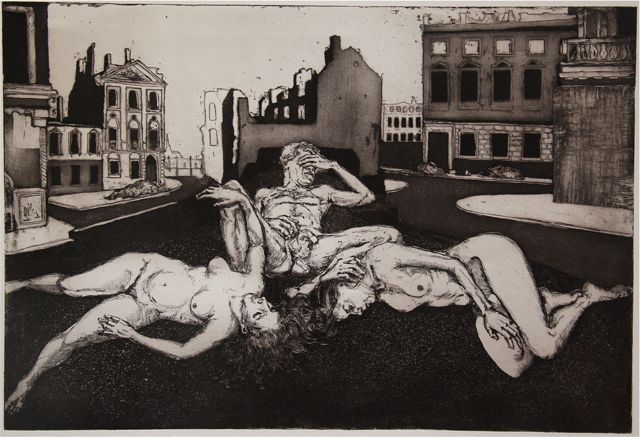
etching 12 x 18″
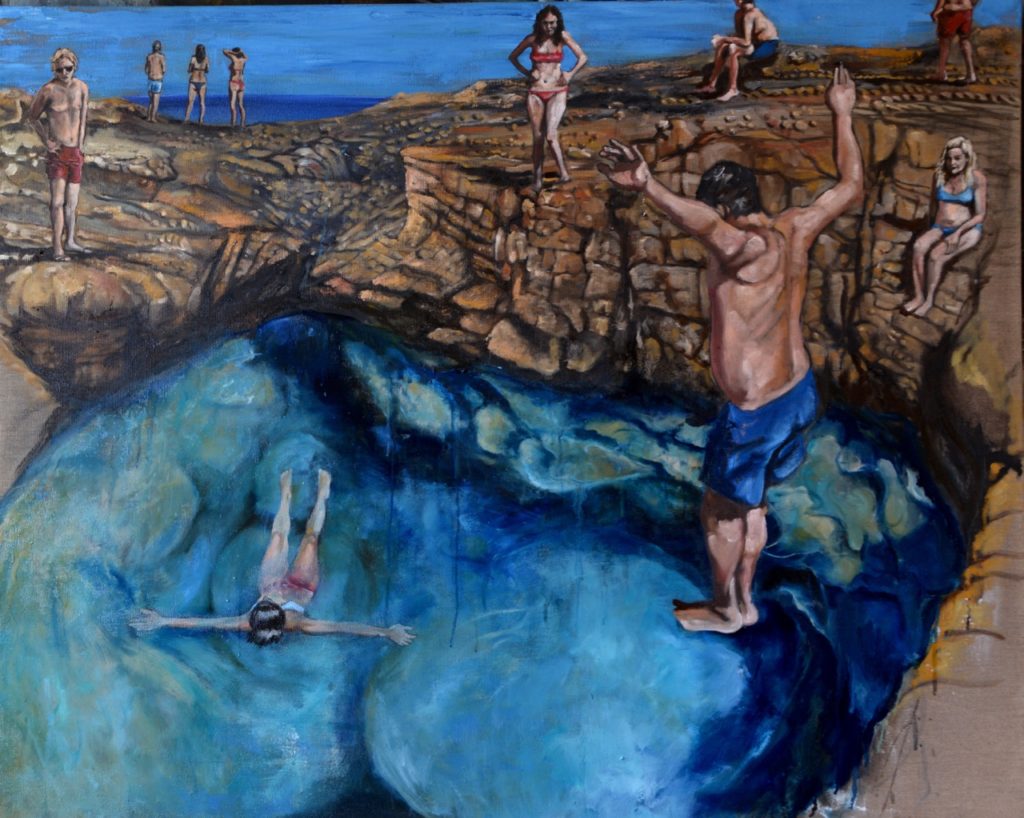
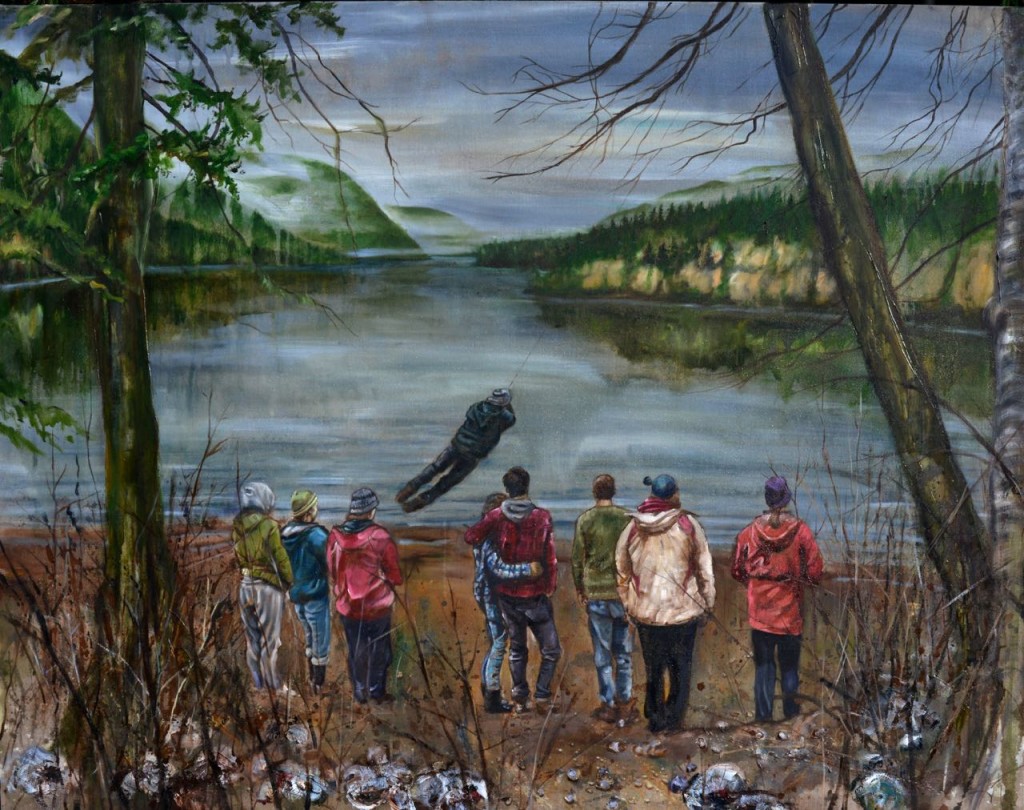
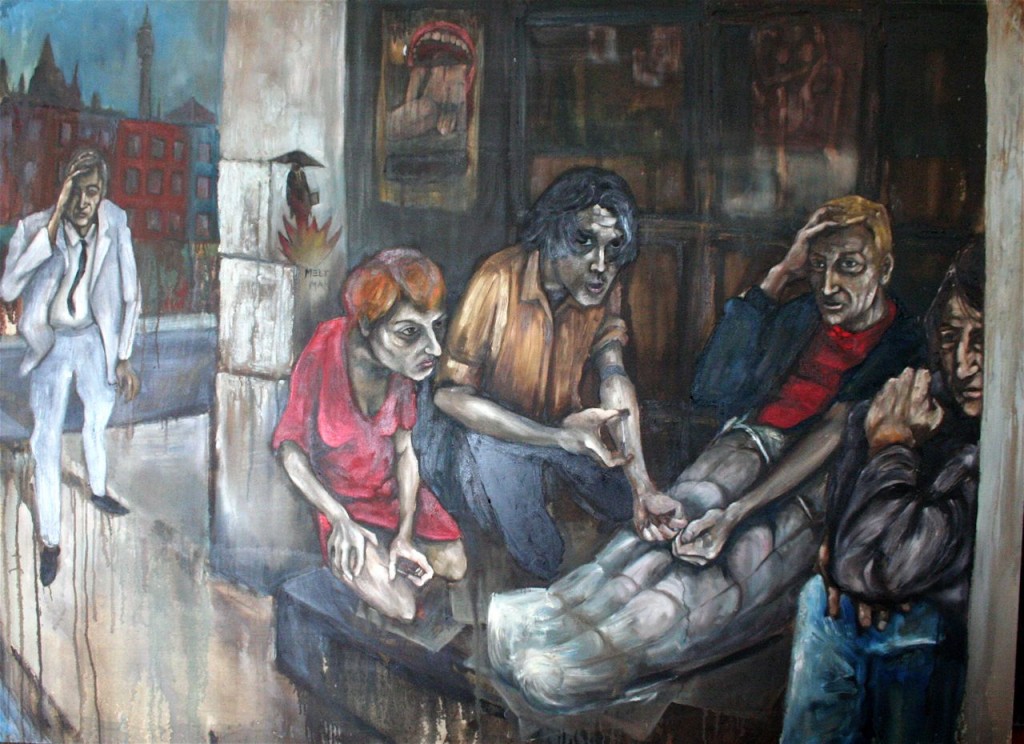

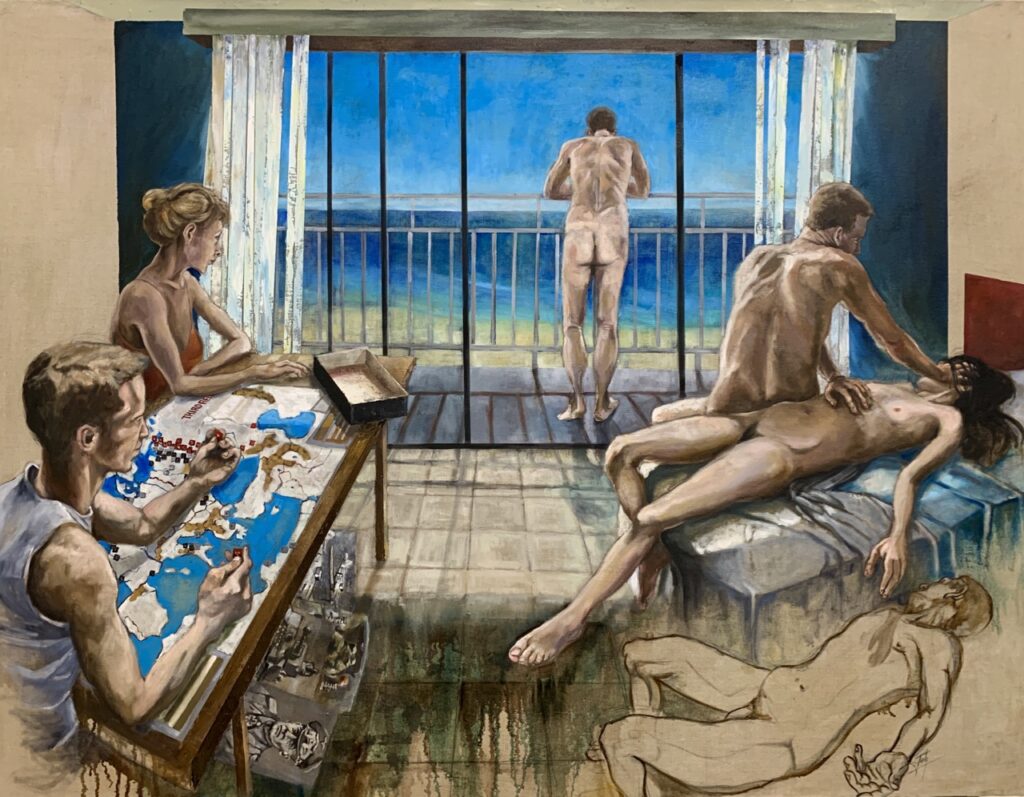
Living in Berlin I attended the Schaubuhne Theatre when they produced the play “2066” based on the novel written by Roberto Bolano. I had just read his book “Third Reich” and so I went home and influenced by the playwright’s ability to construct a new creative work from the novel. I stayed up late that night at the kitchen table and constructed the composition for this painting. I wanted to incorporate the game that is central to the title of the book, and I populated the composition with the stories key characters. Additionally, I wanted to reflect the books air of ambiguity around sexuality that can be at at once complex, intimate, obsessive, and coercive. The idea of memory or the unspoken or the missing other both private and historical were important elements to evoke.
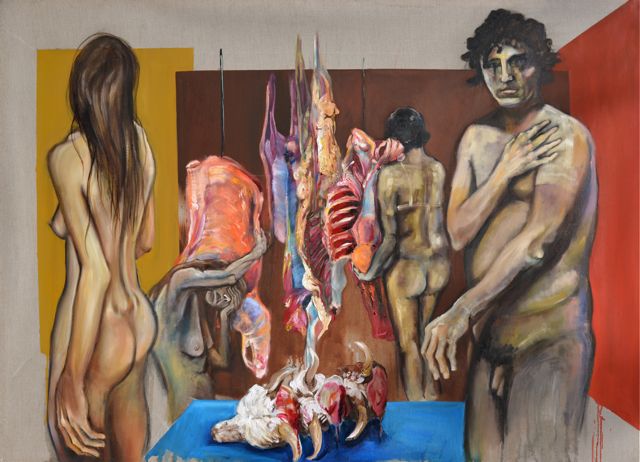
The painting above was also a product of a Schaubuhne’s production
